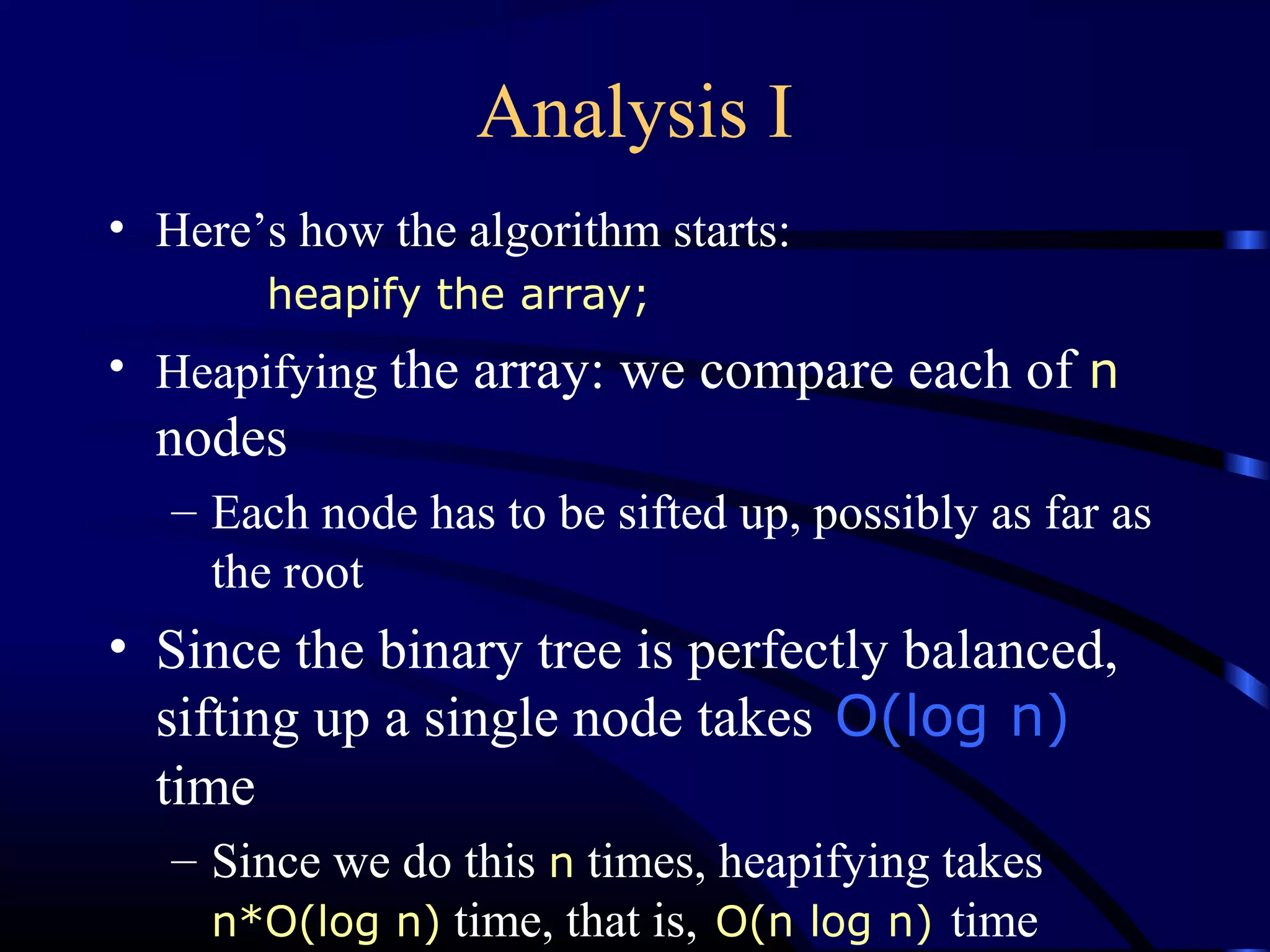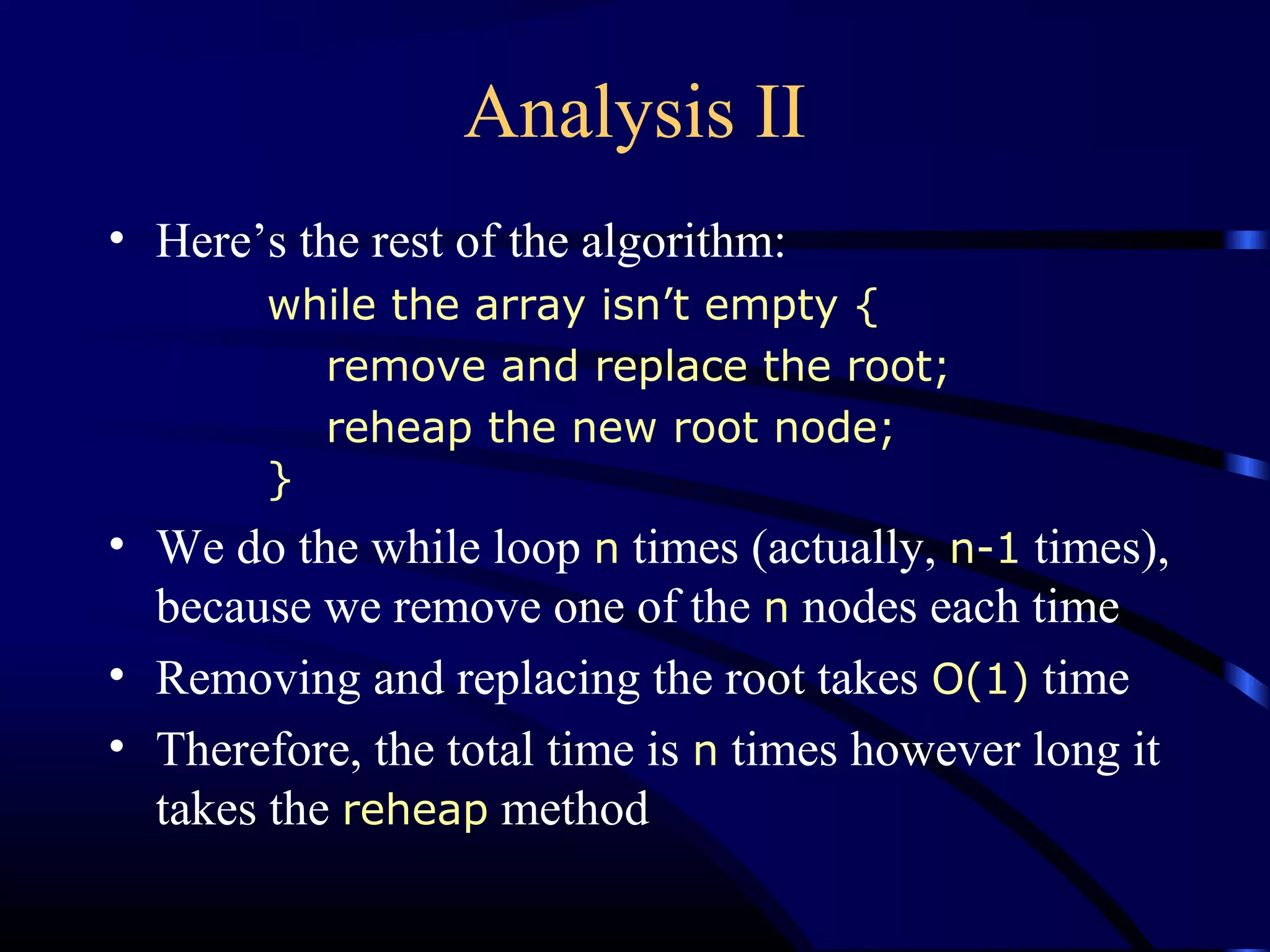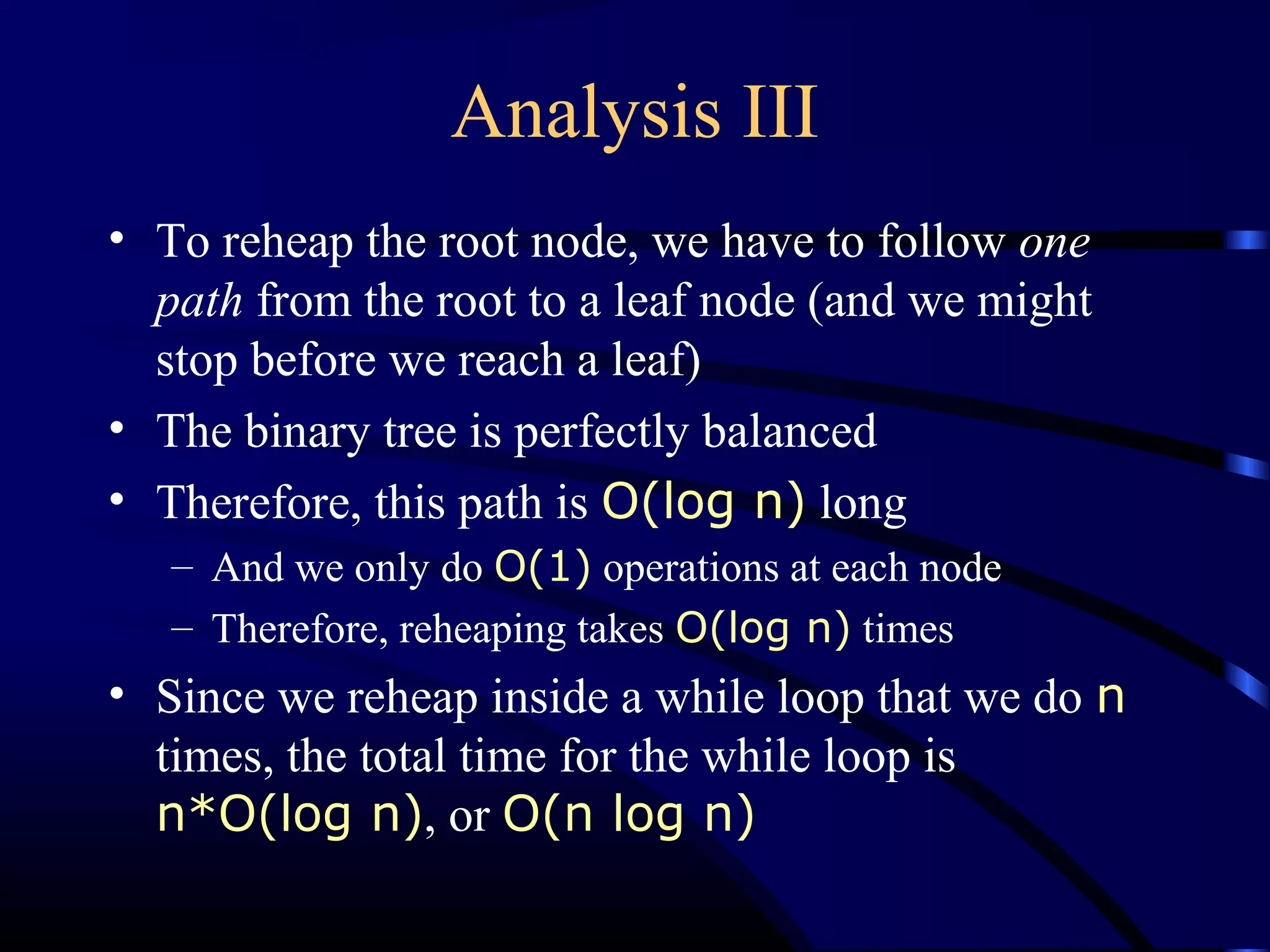Heapsort is an O(n log n) sorting algorithm that uses a heap data structure. It works by first converting the input array into a max heap, where the largest element is stored at the root. It then repeatedly removes the largest element from the heap and inserts it into the sorted end of the array. This process continues until the heap is empty, resulting in a fully sorted array. The document provides detailed explanations and examples of how to construct a max heap from an array and how to remove and re-heapify elements during the sorting process.


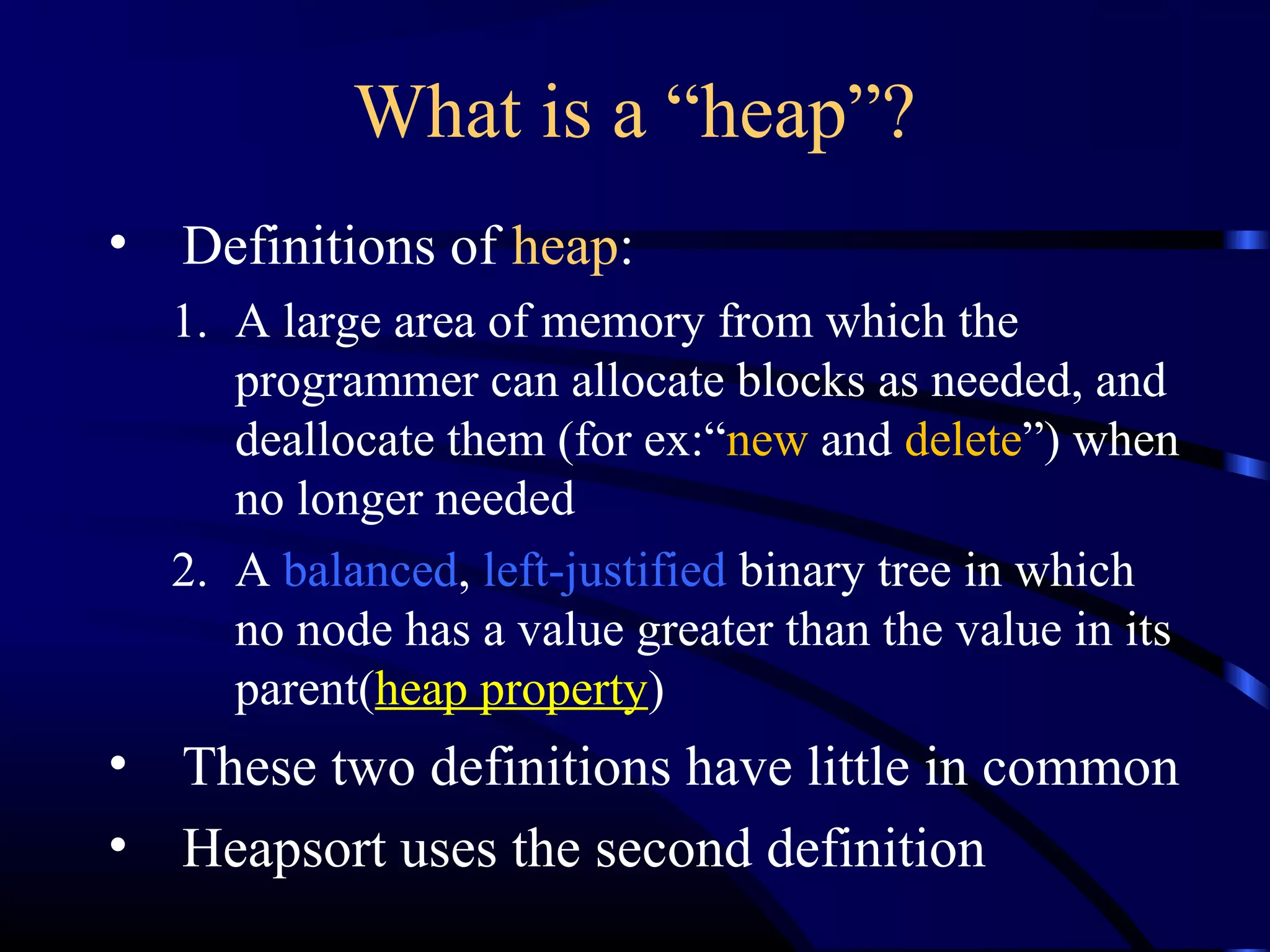
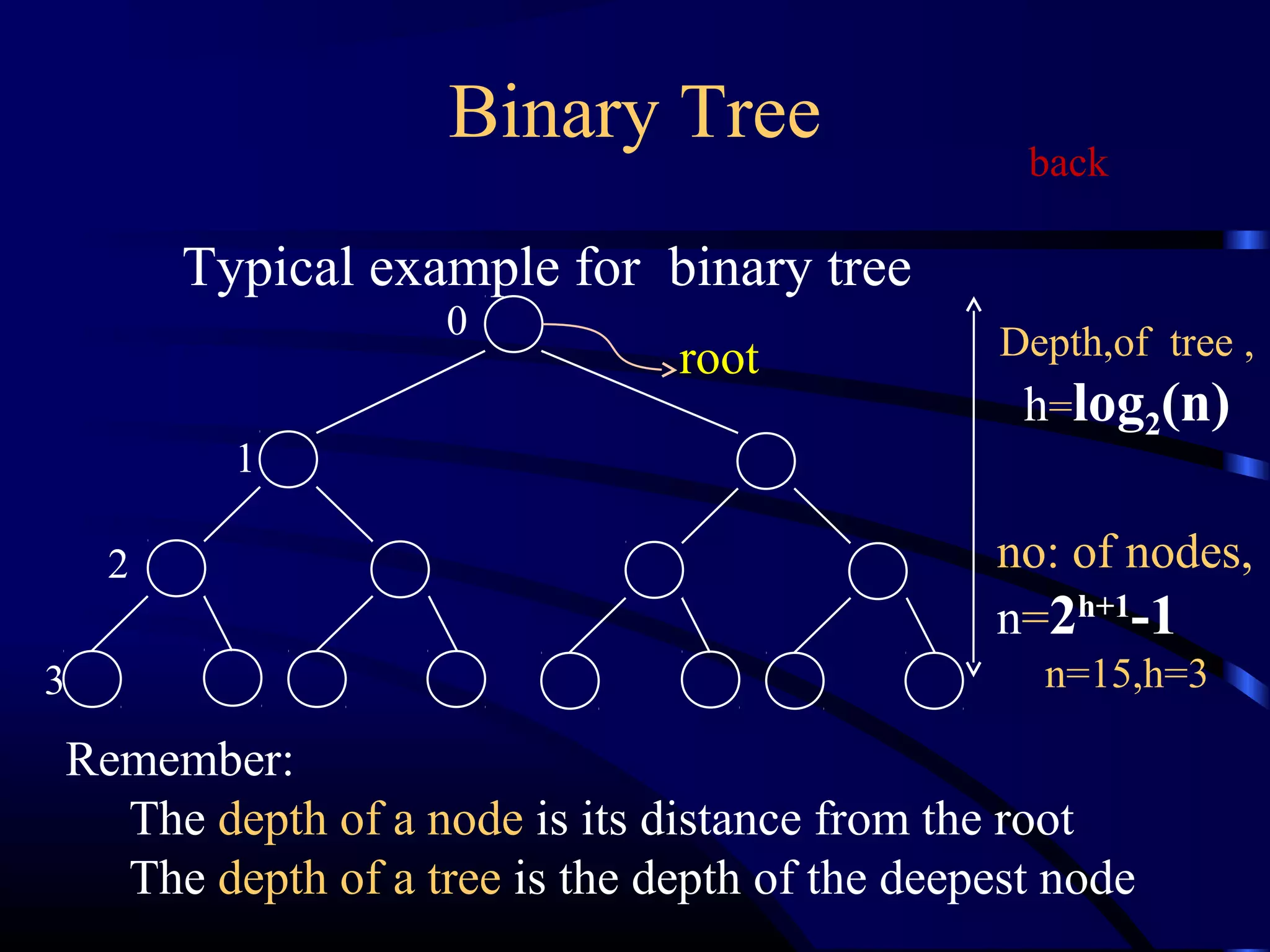


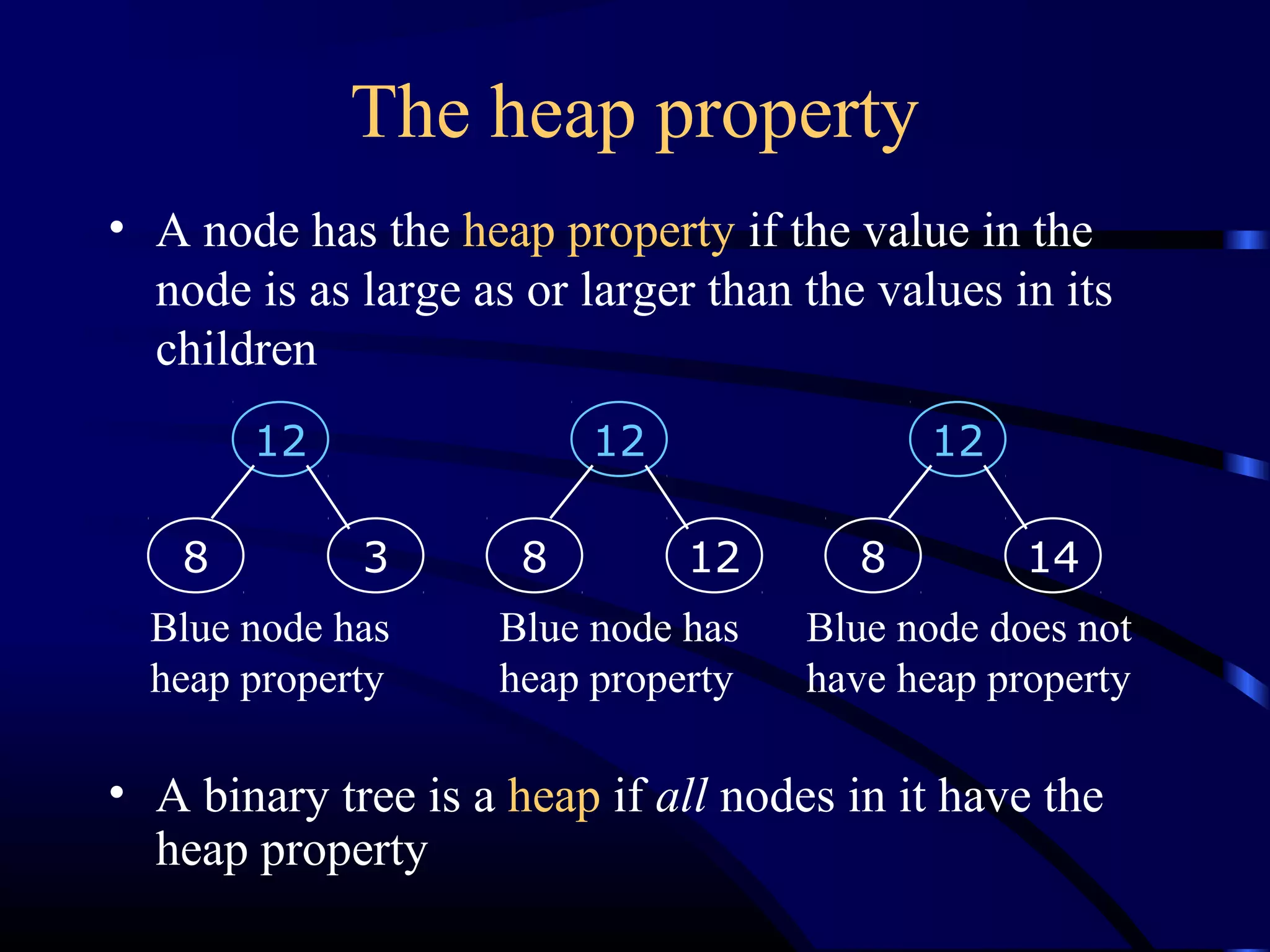
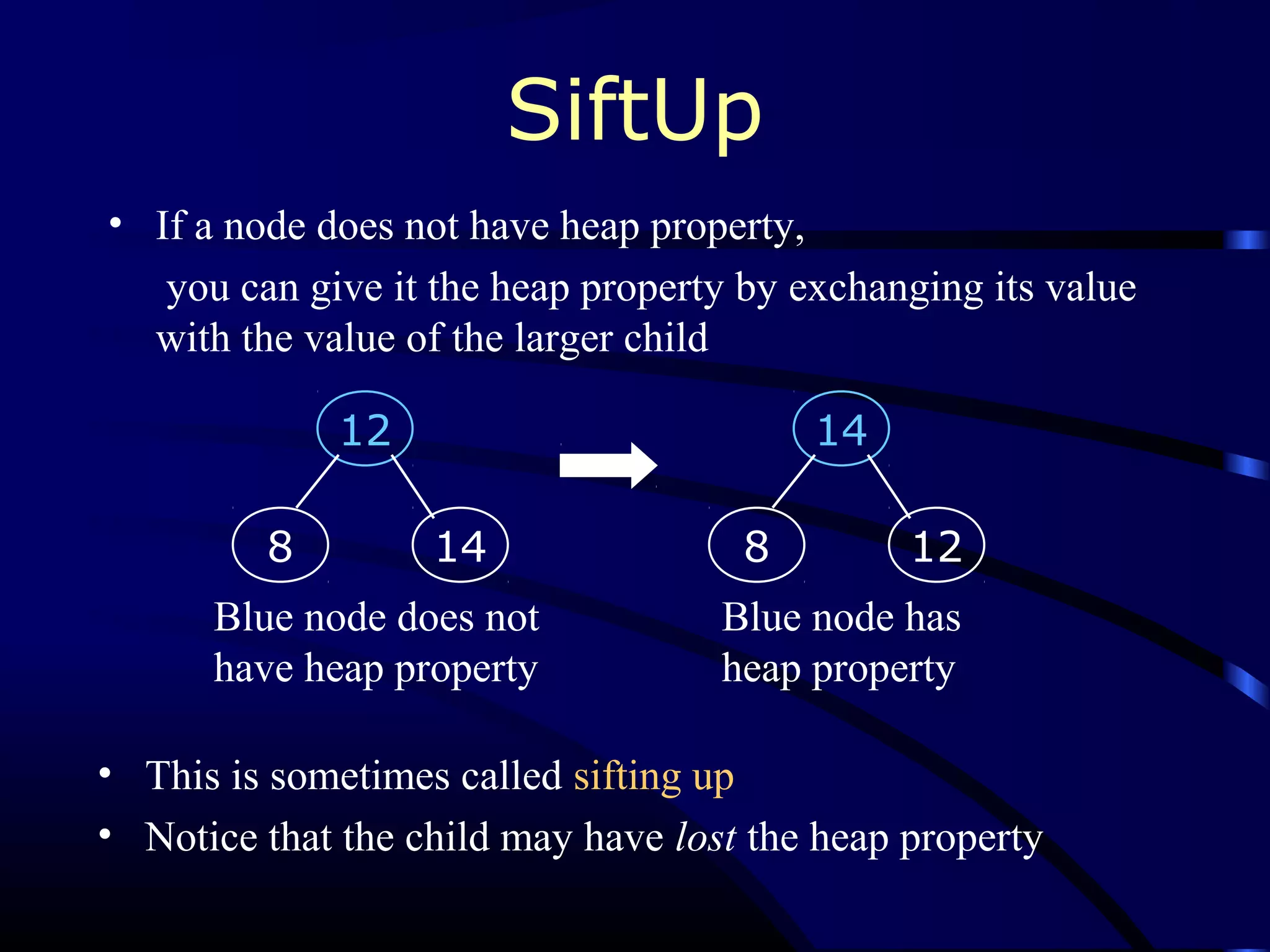
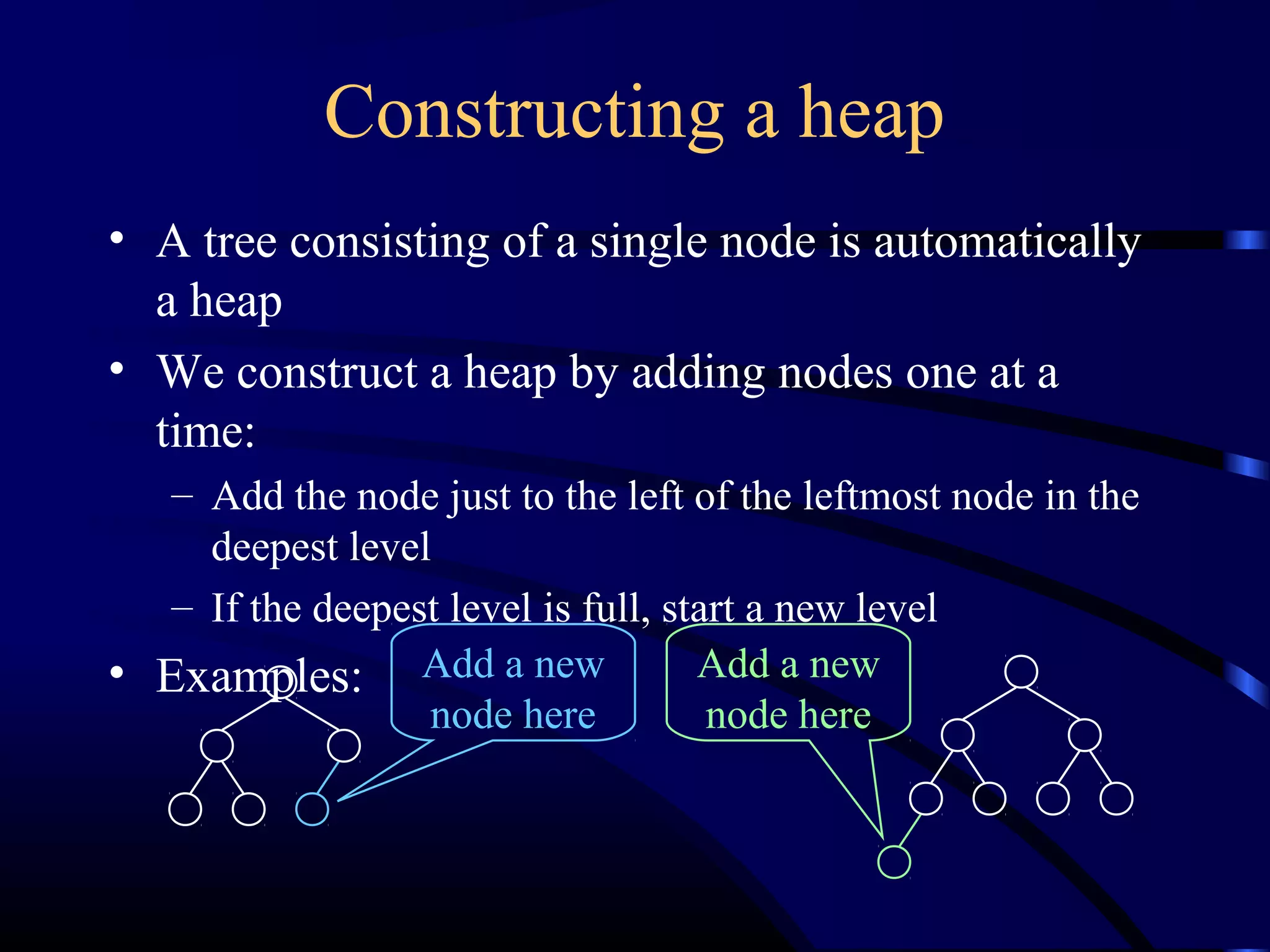

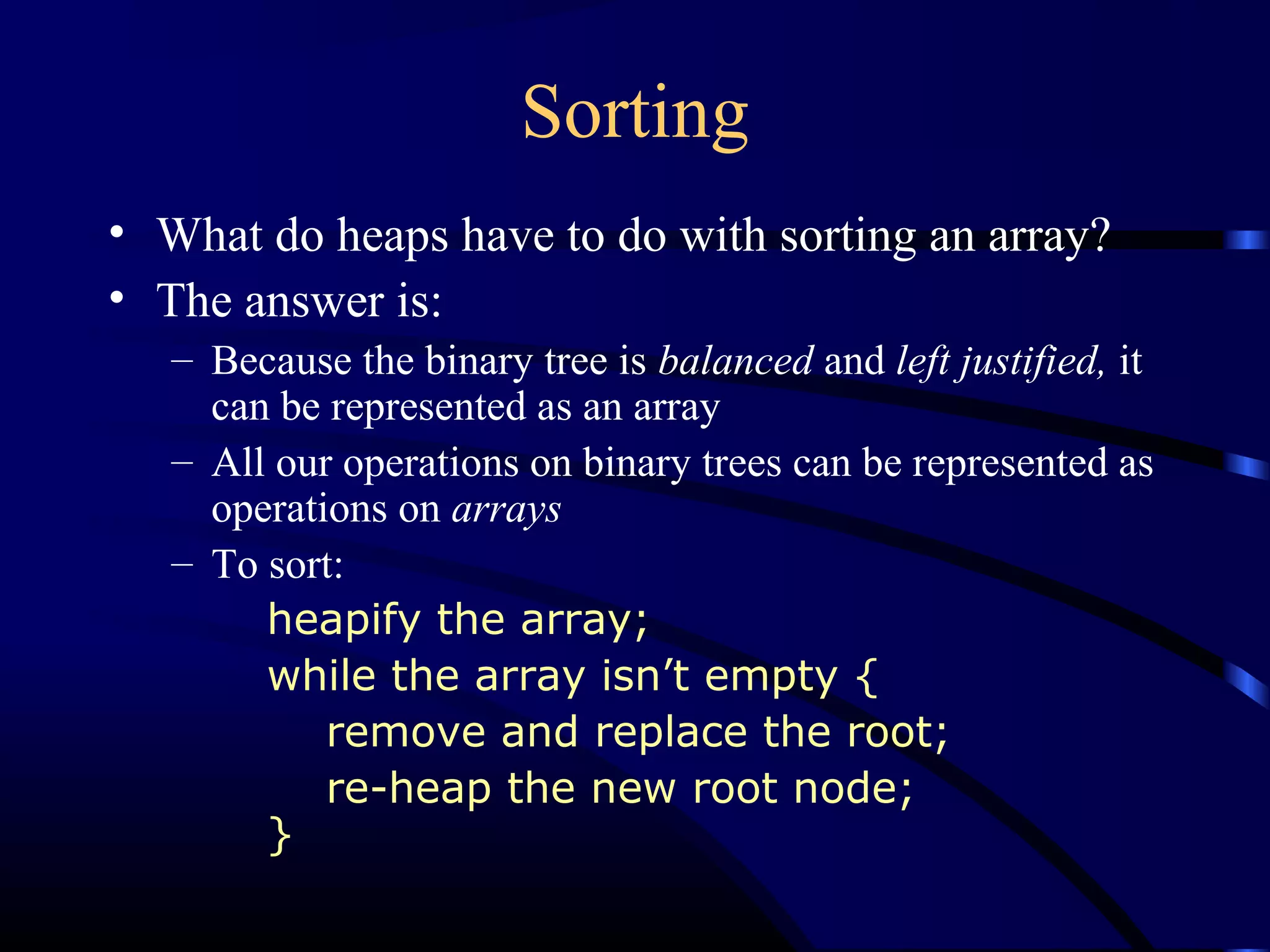
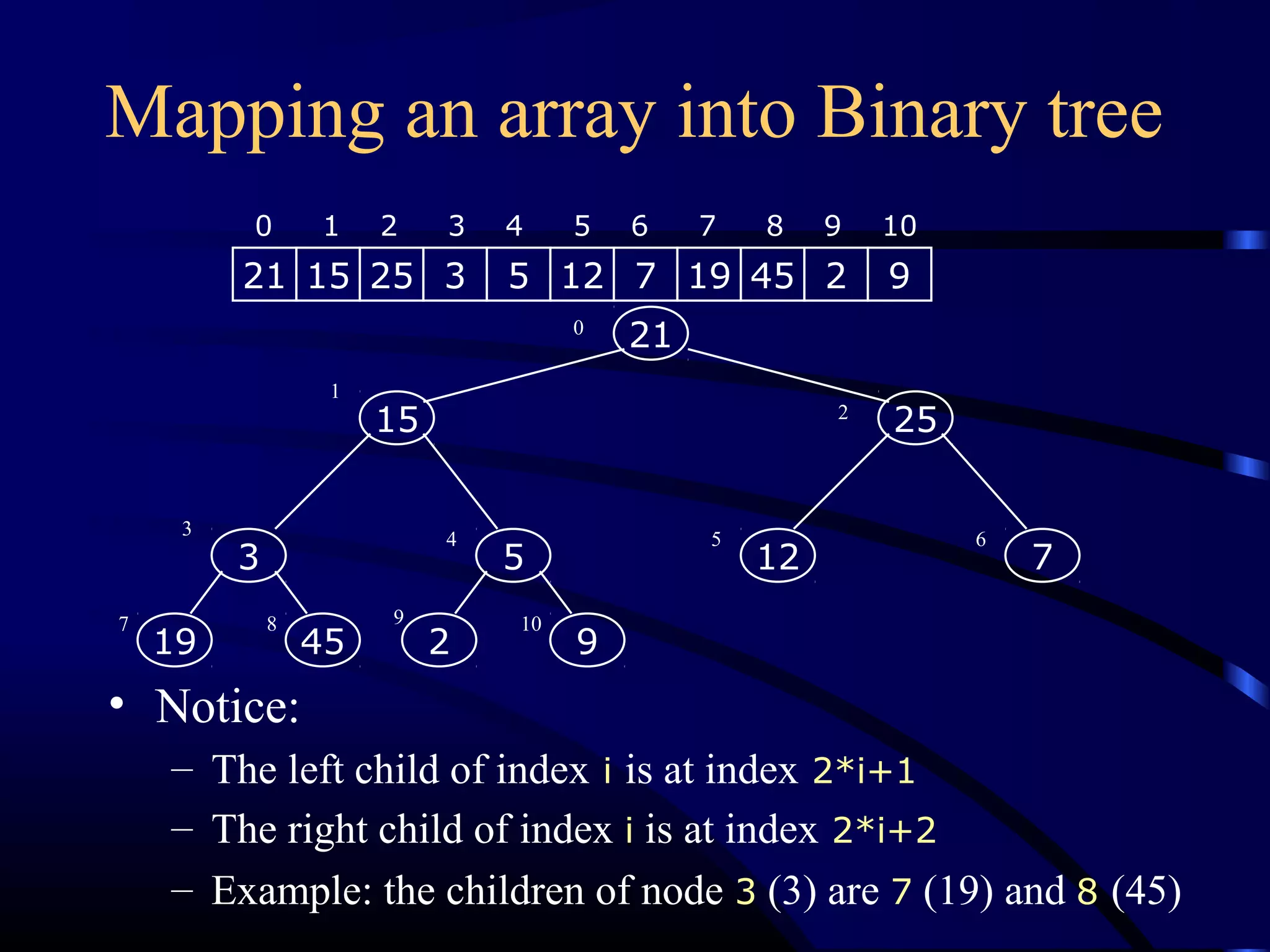
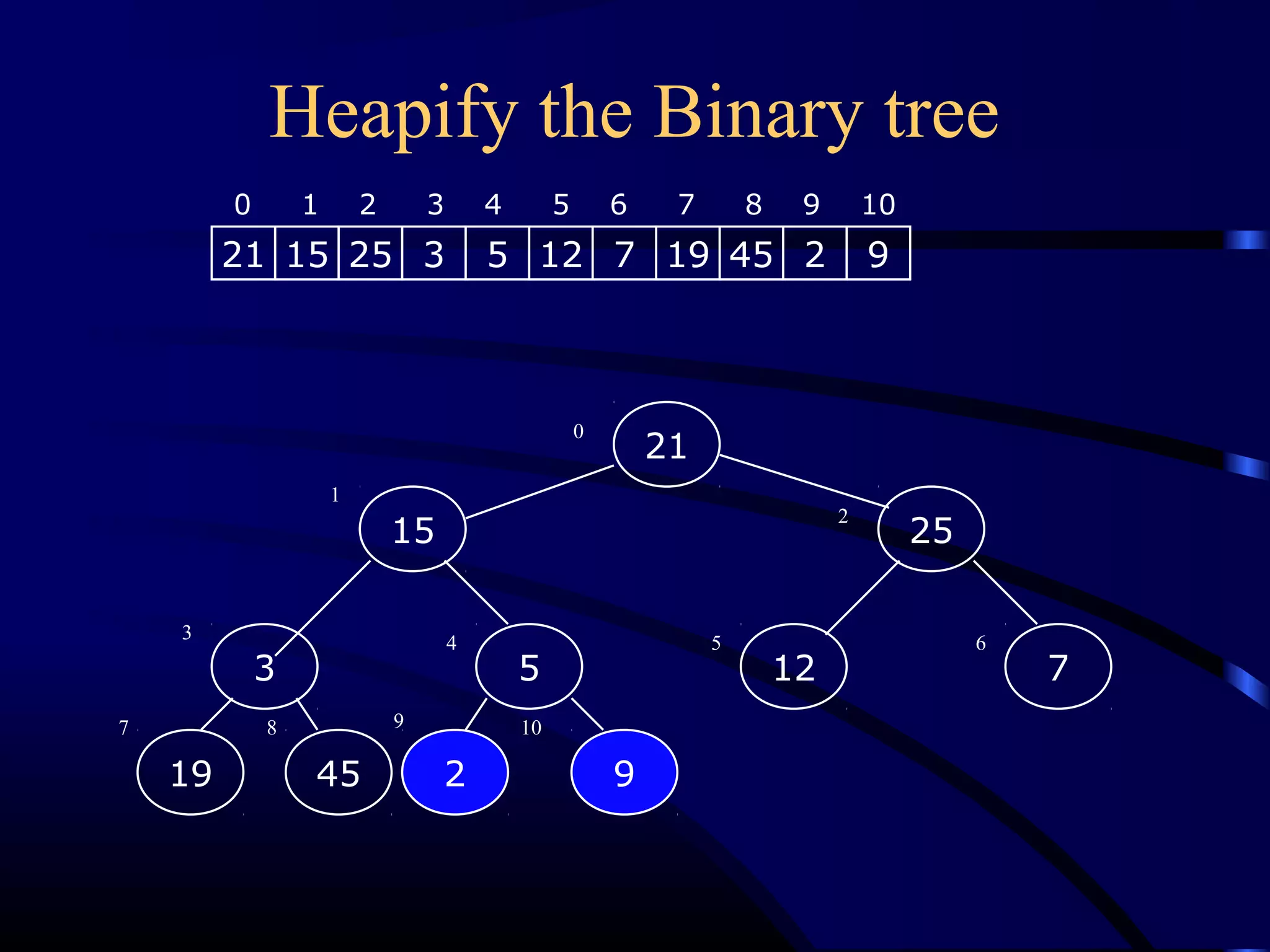
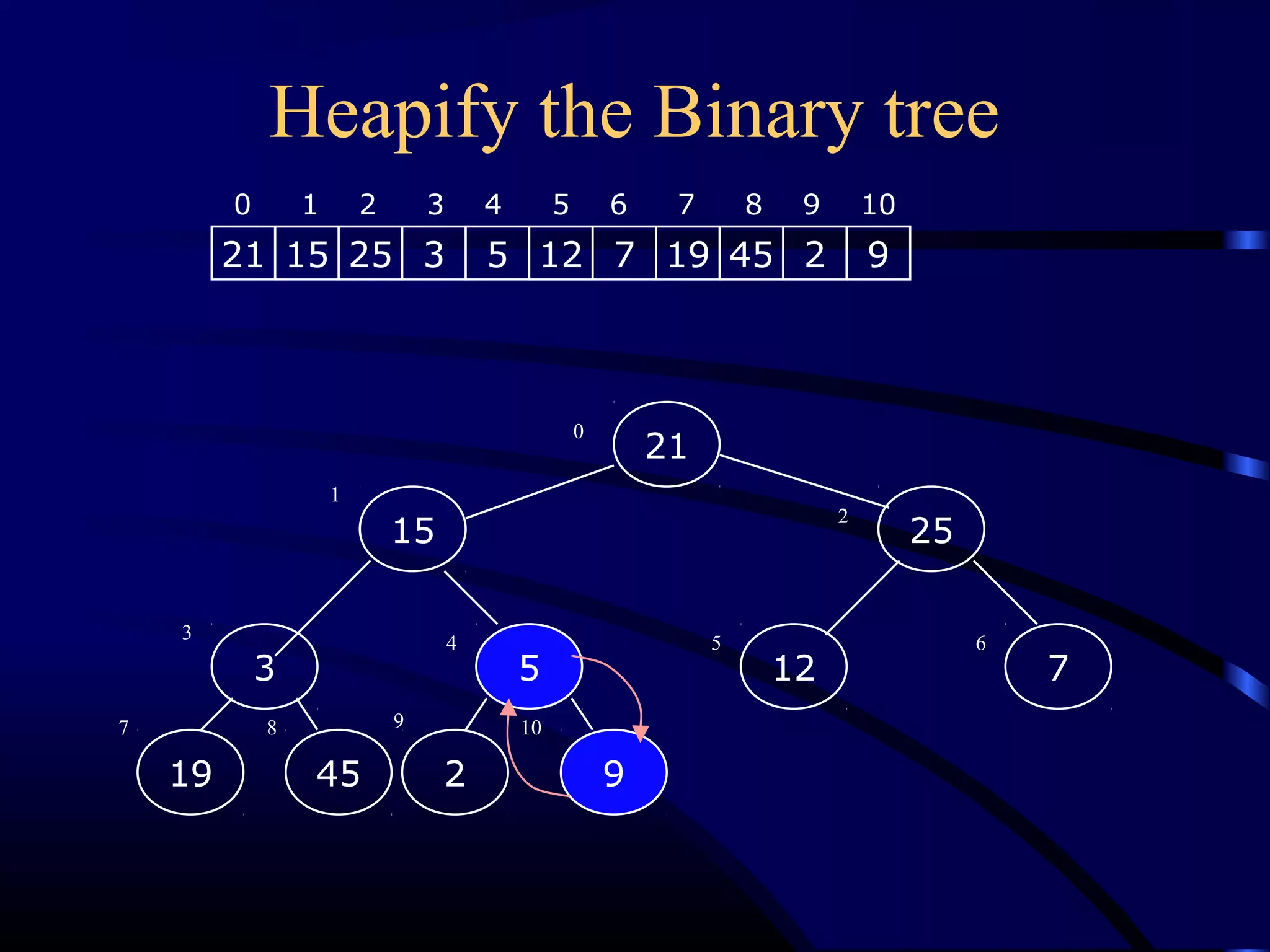
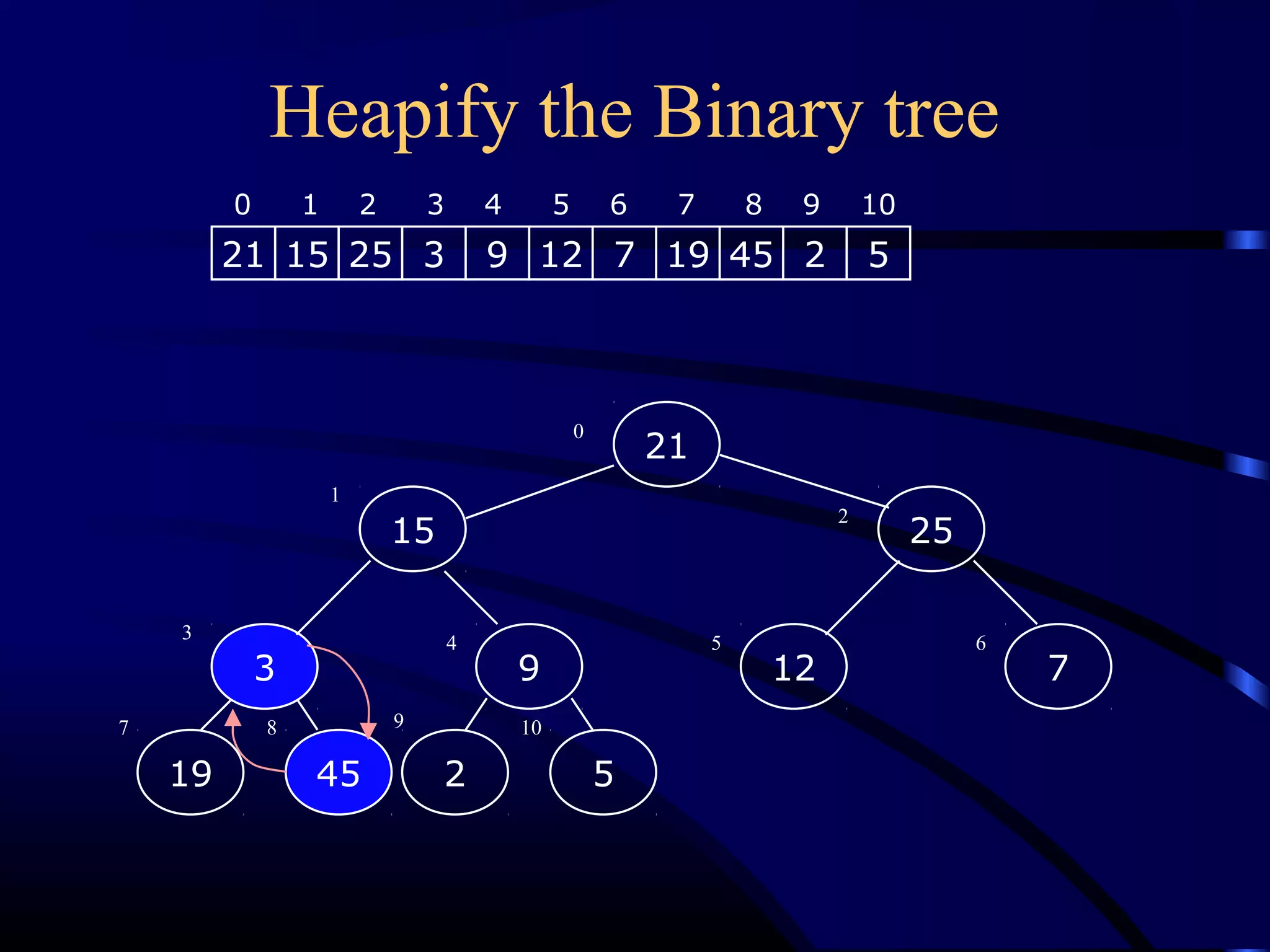
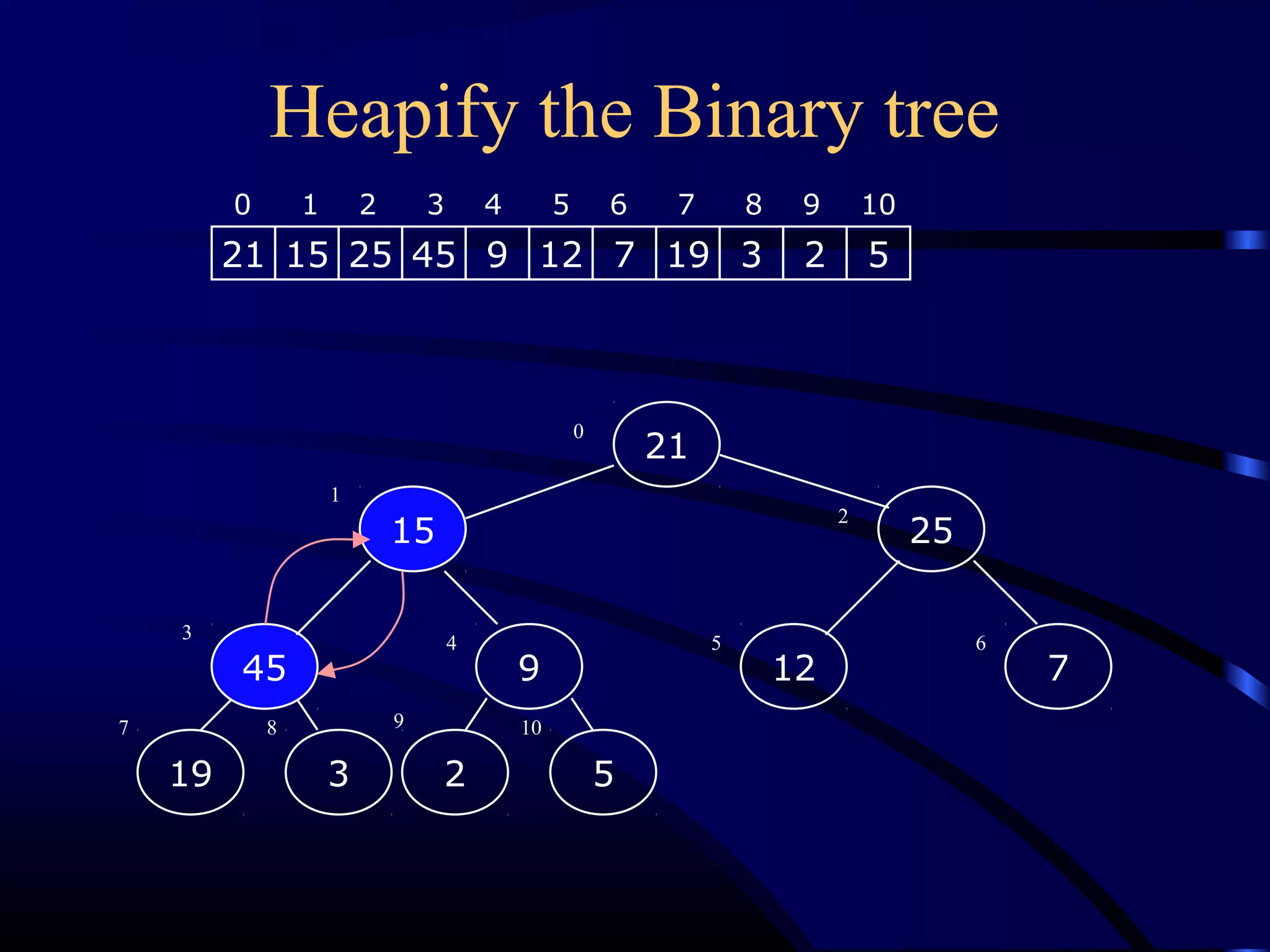

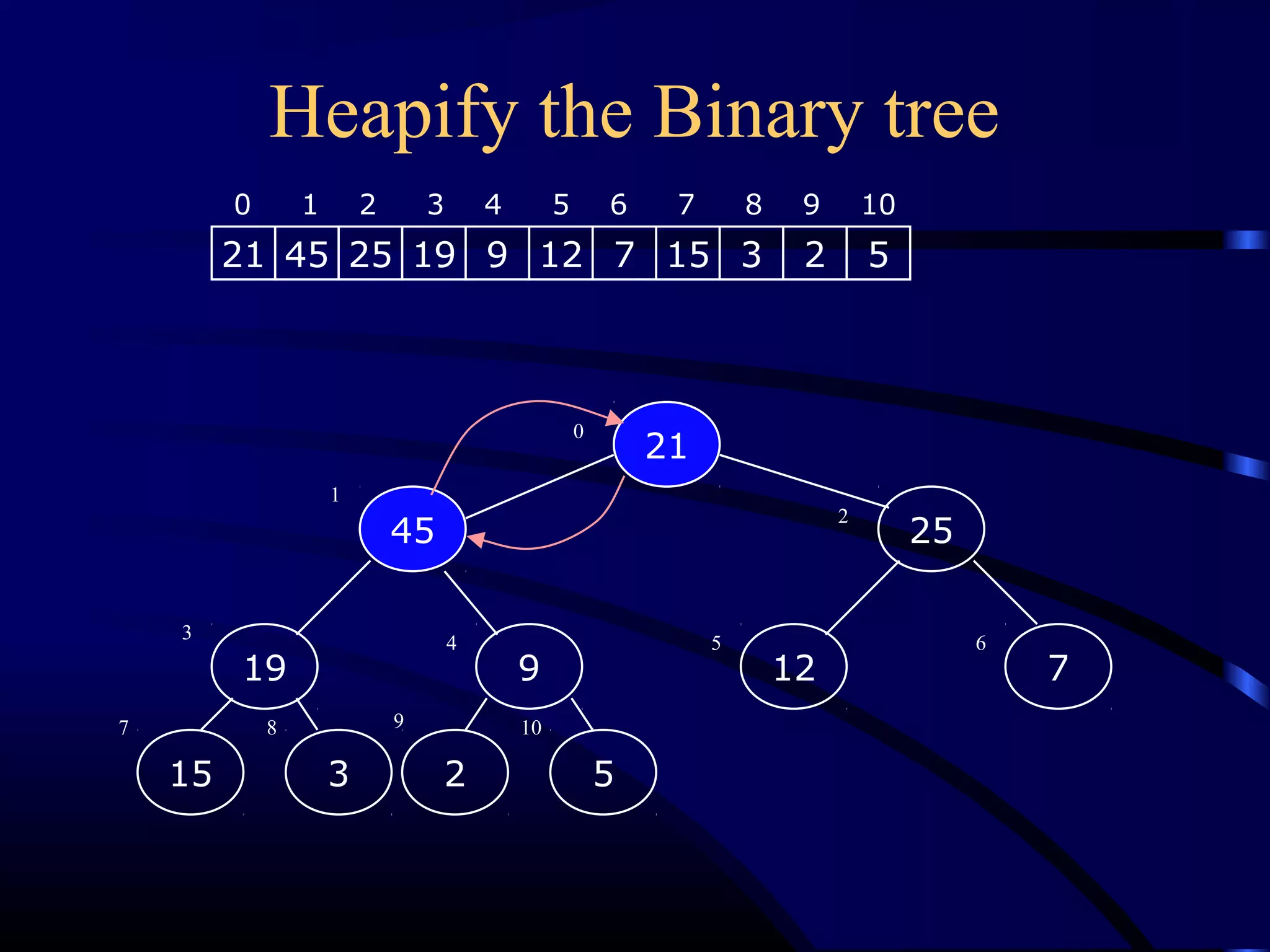
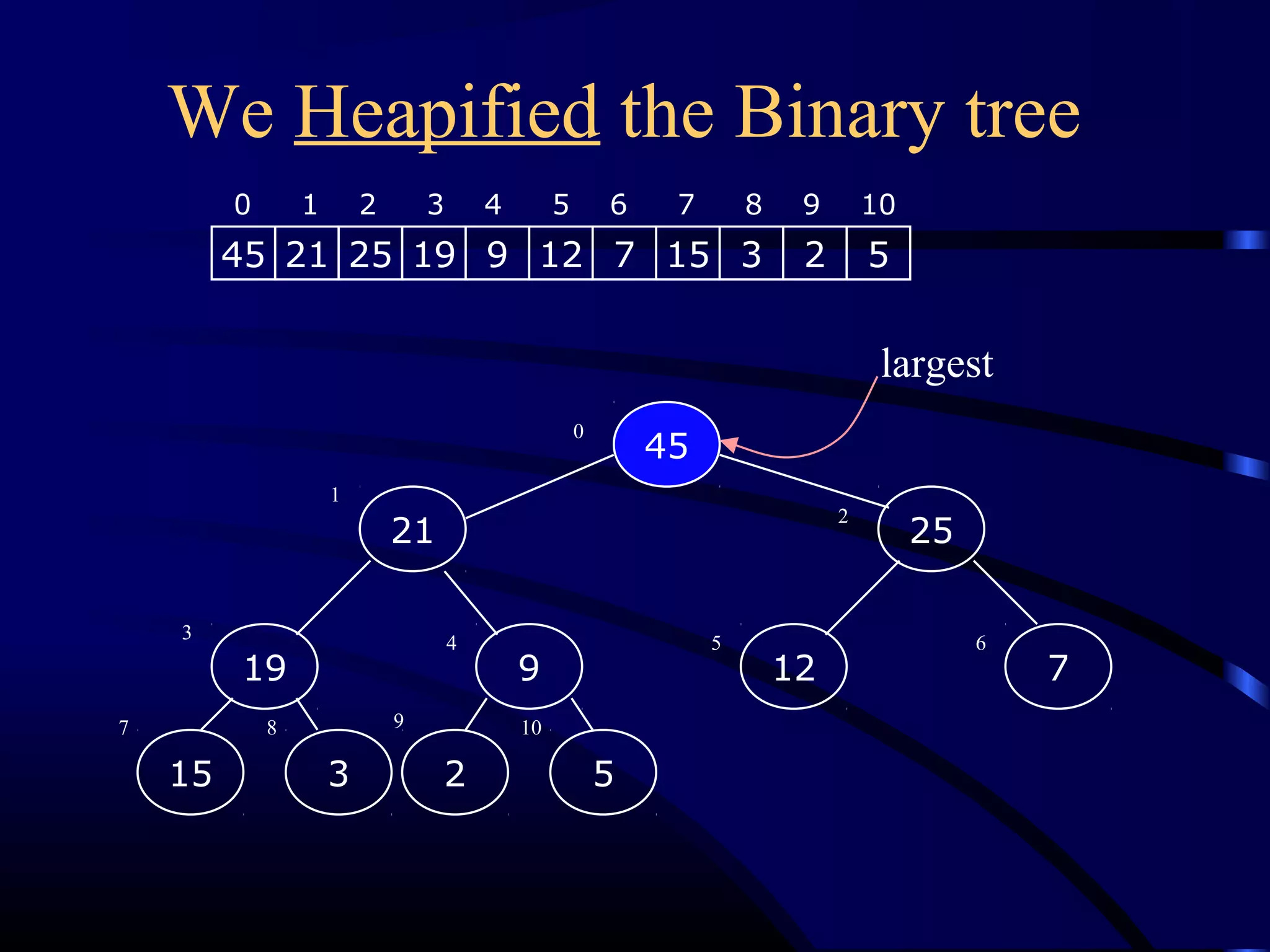
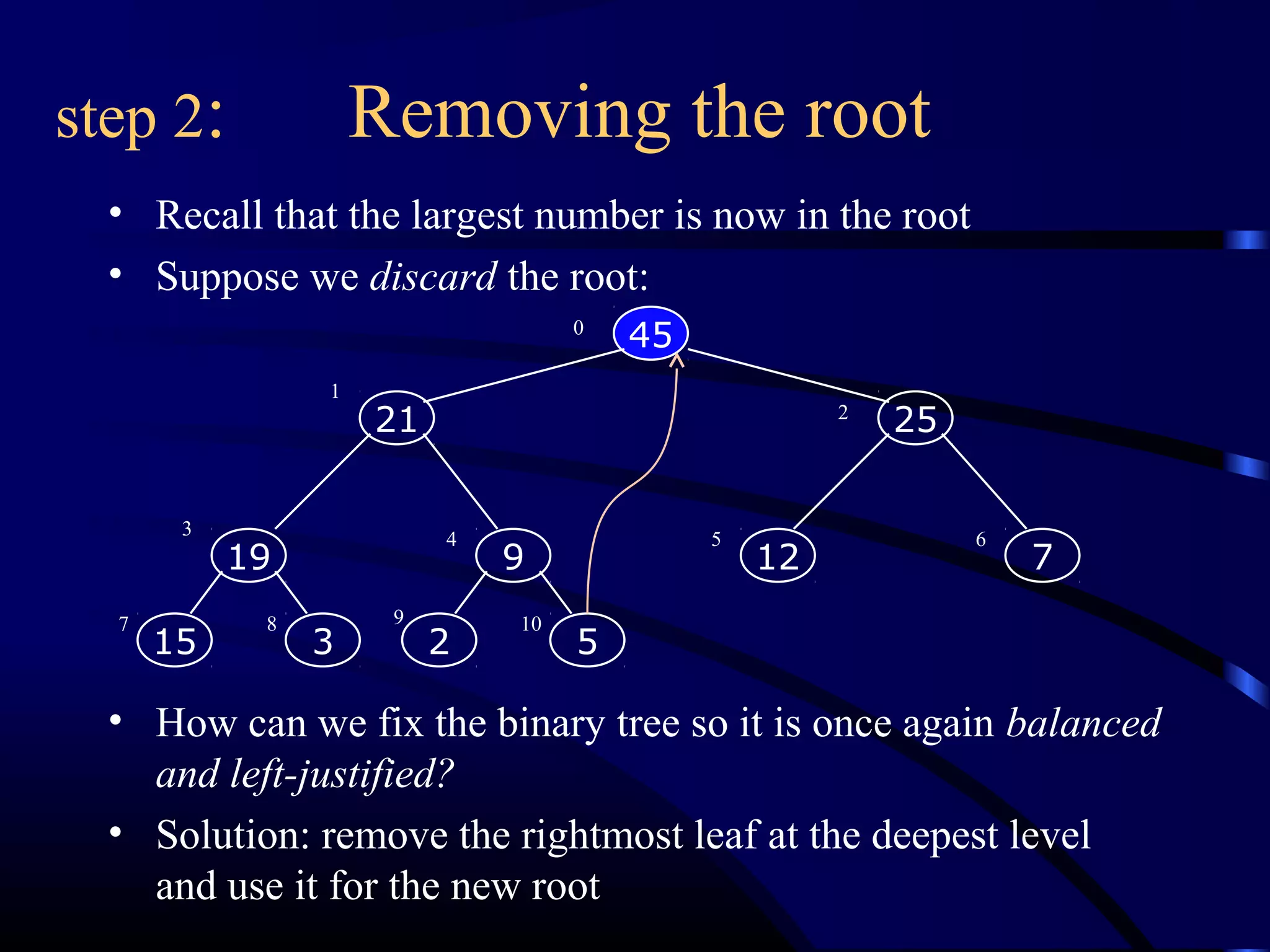
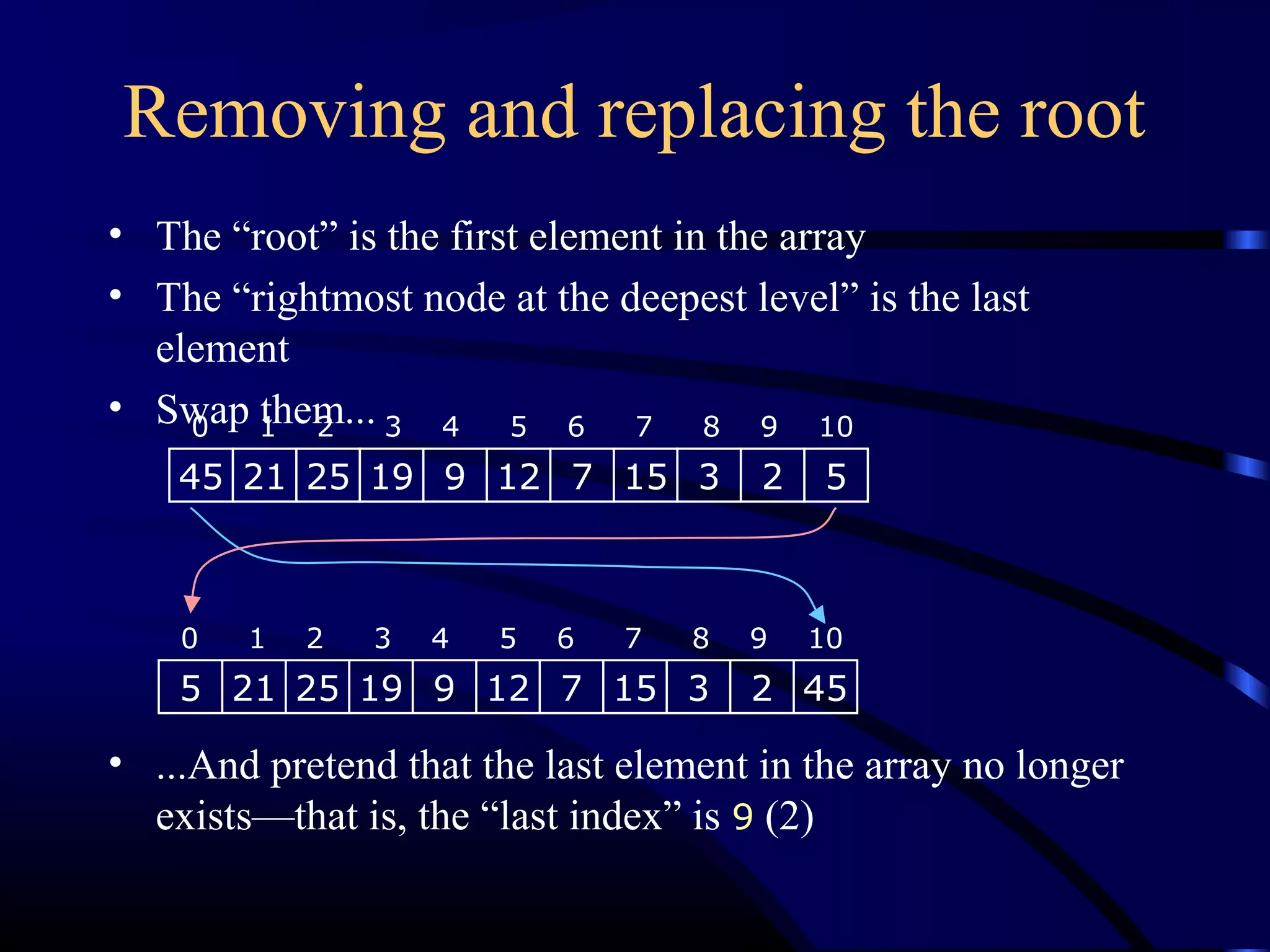

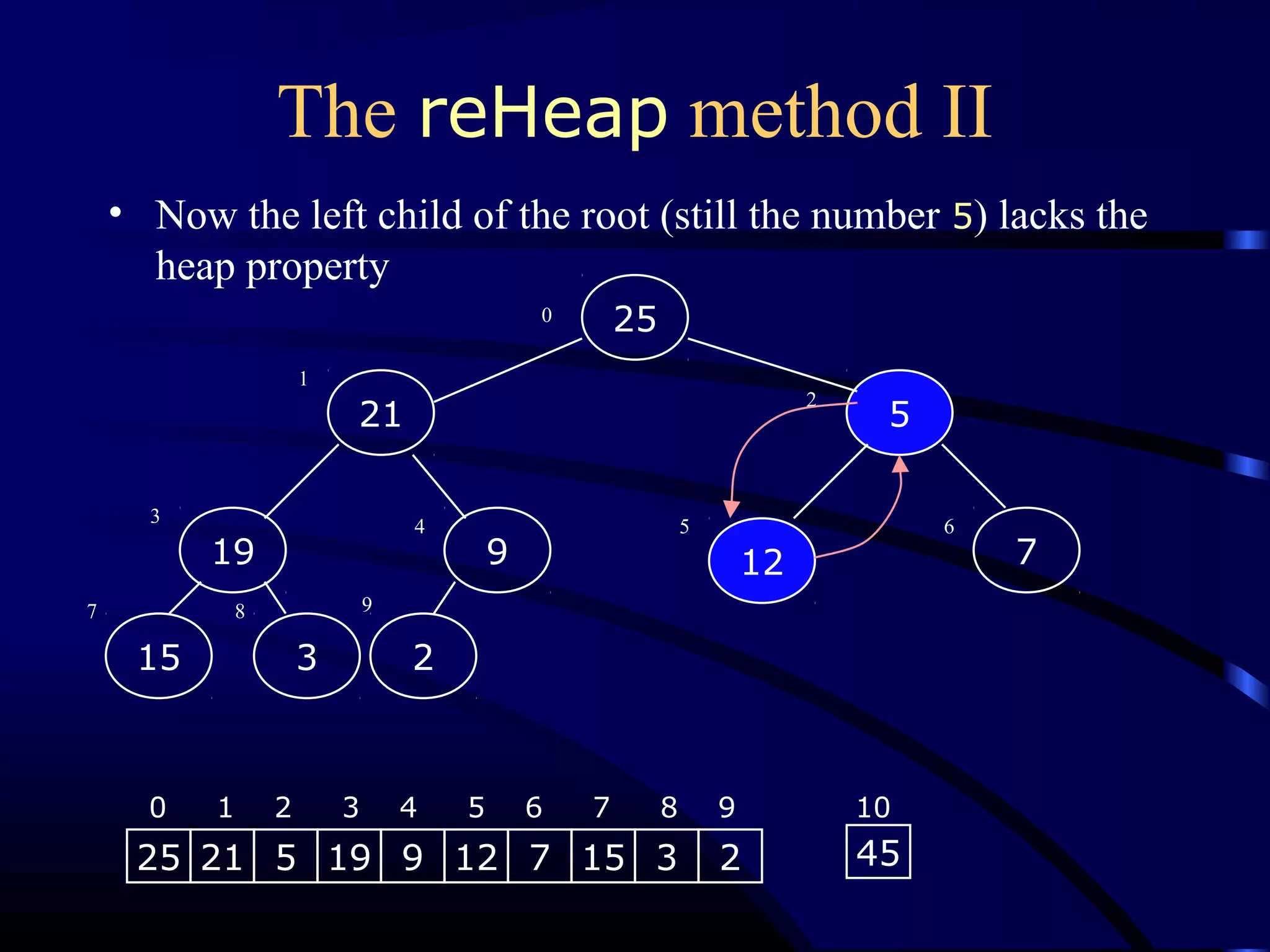
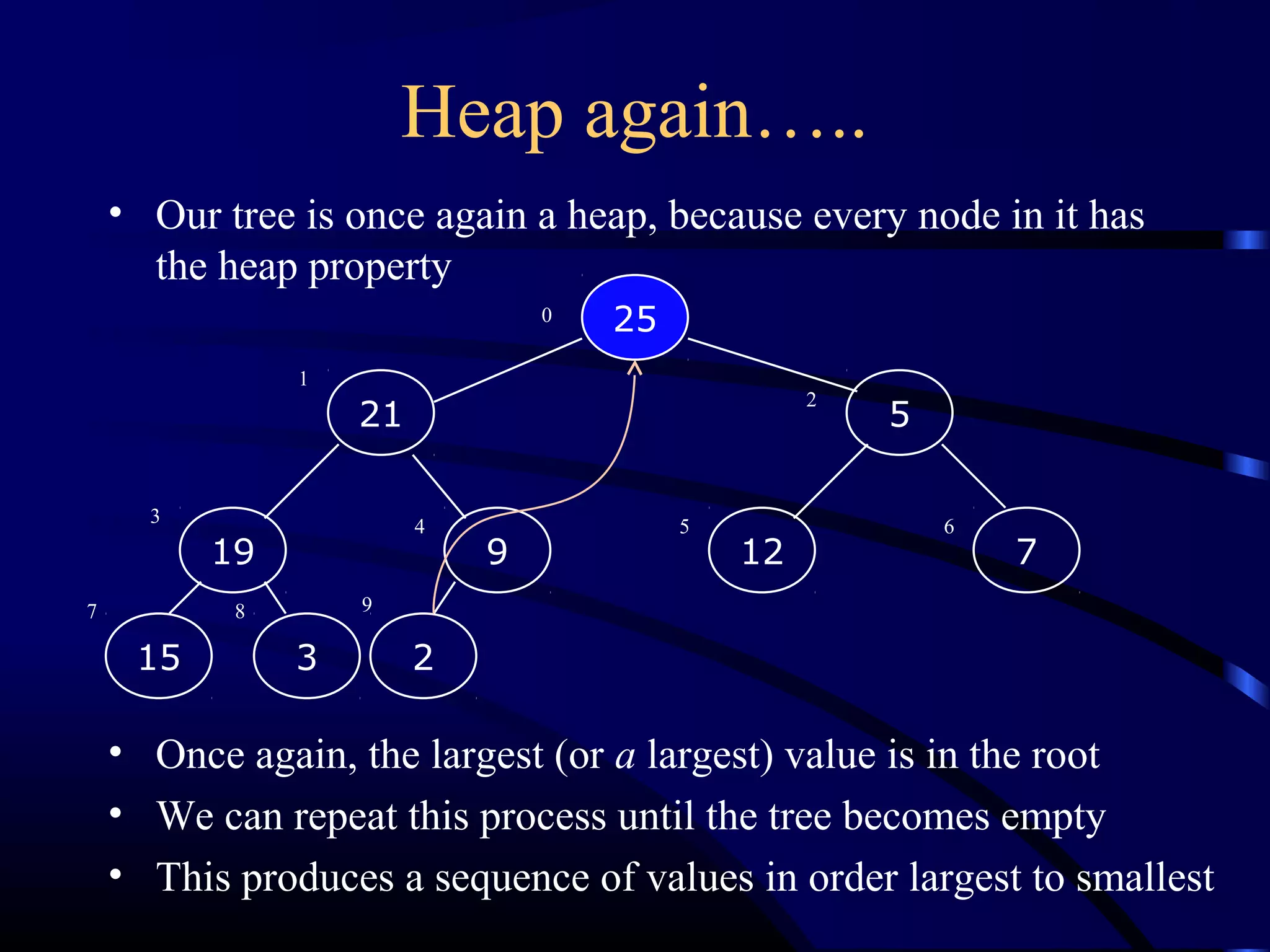
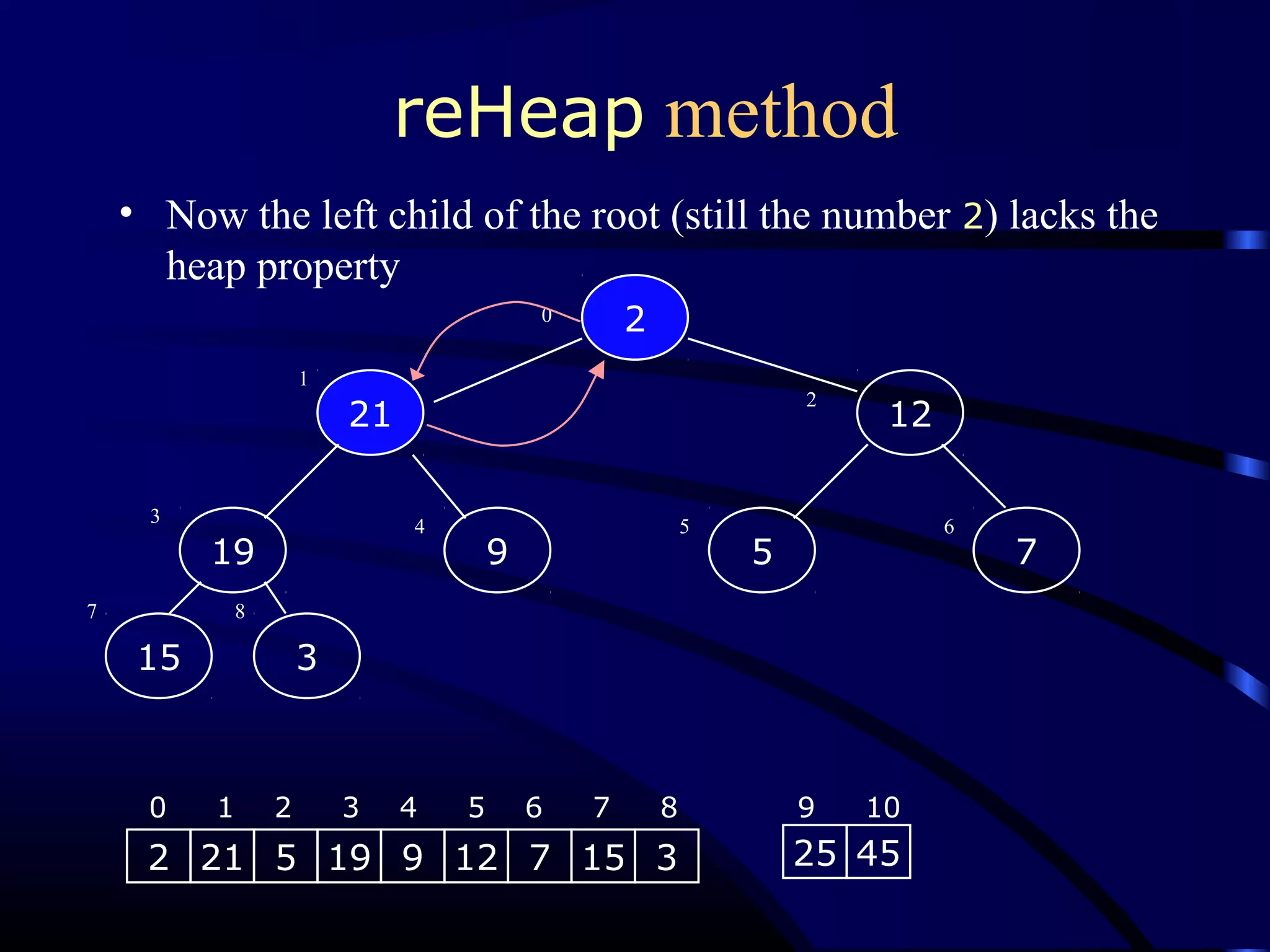
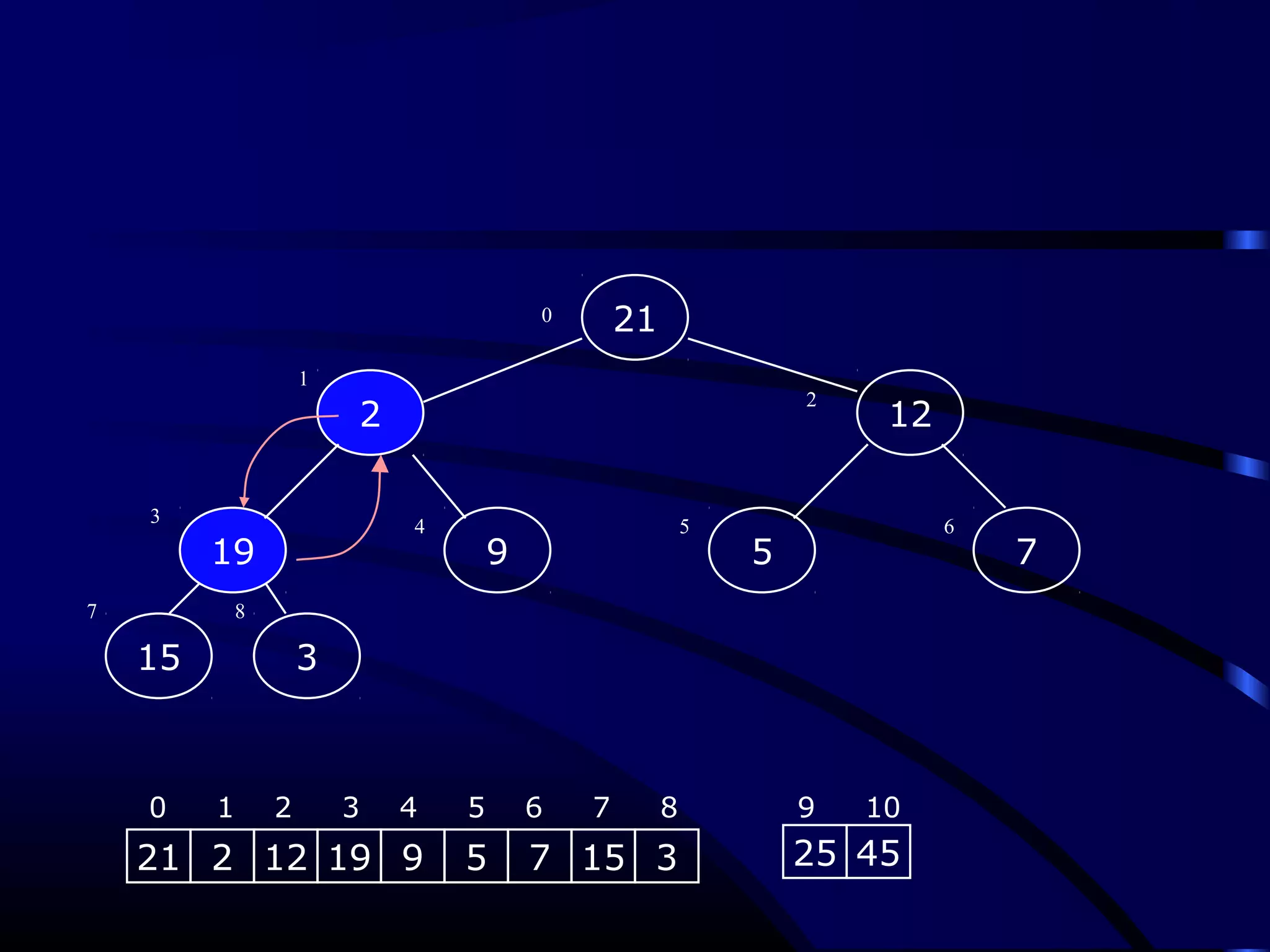
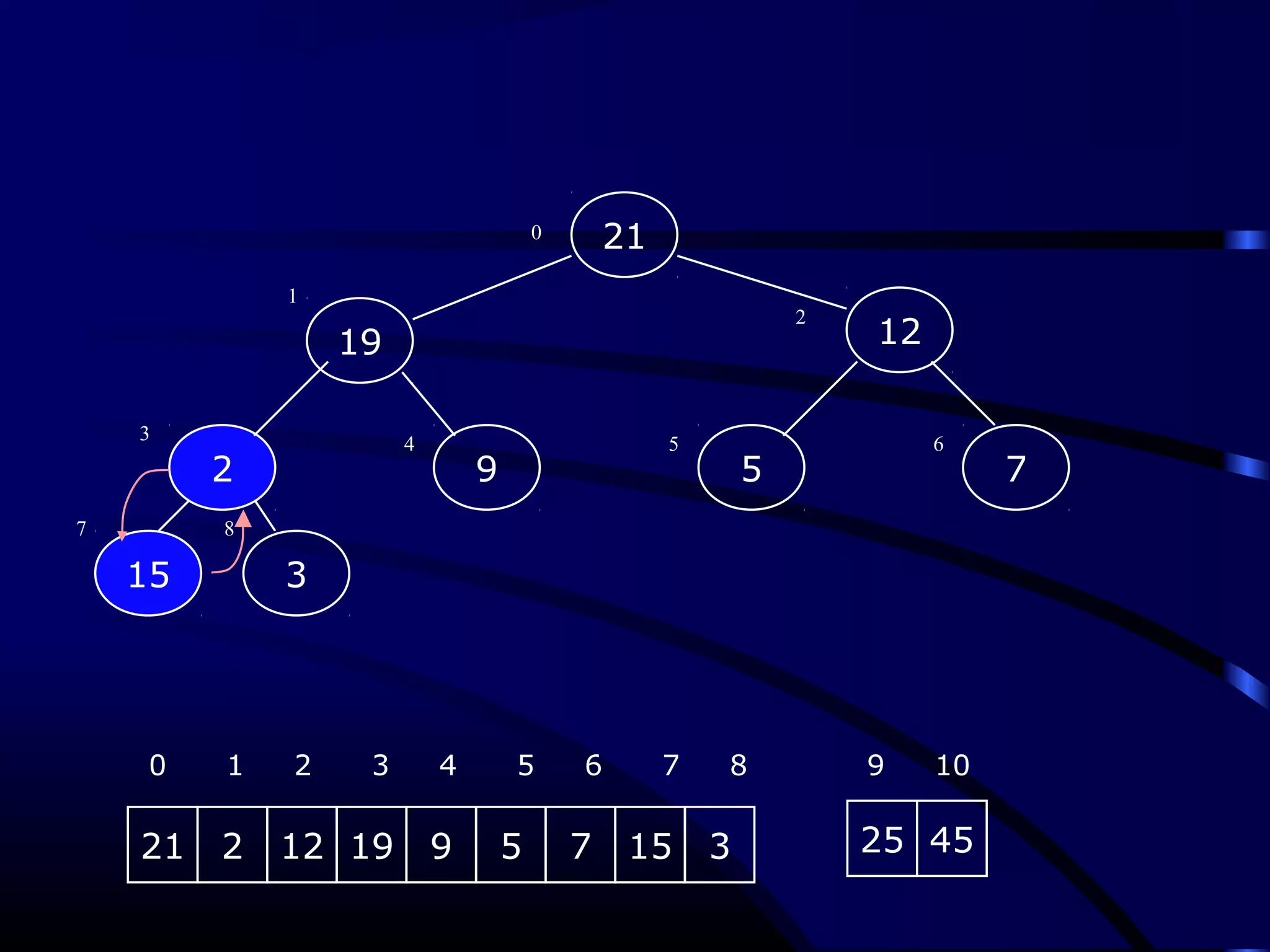
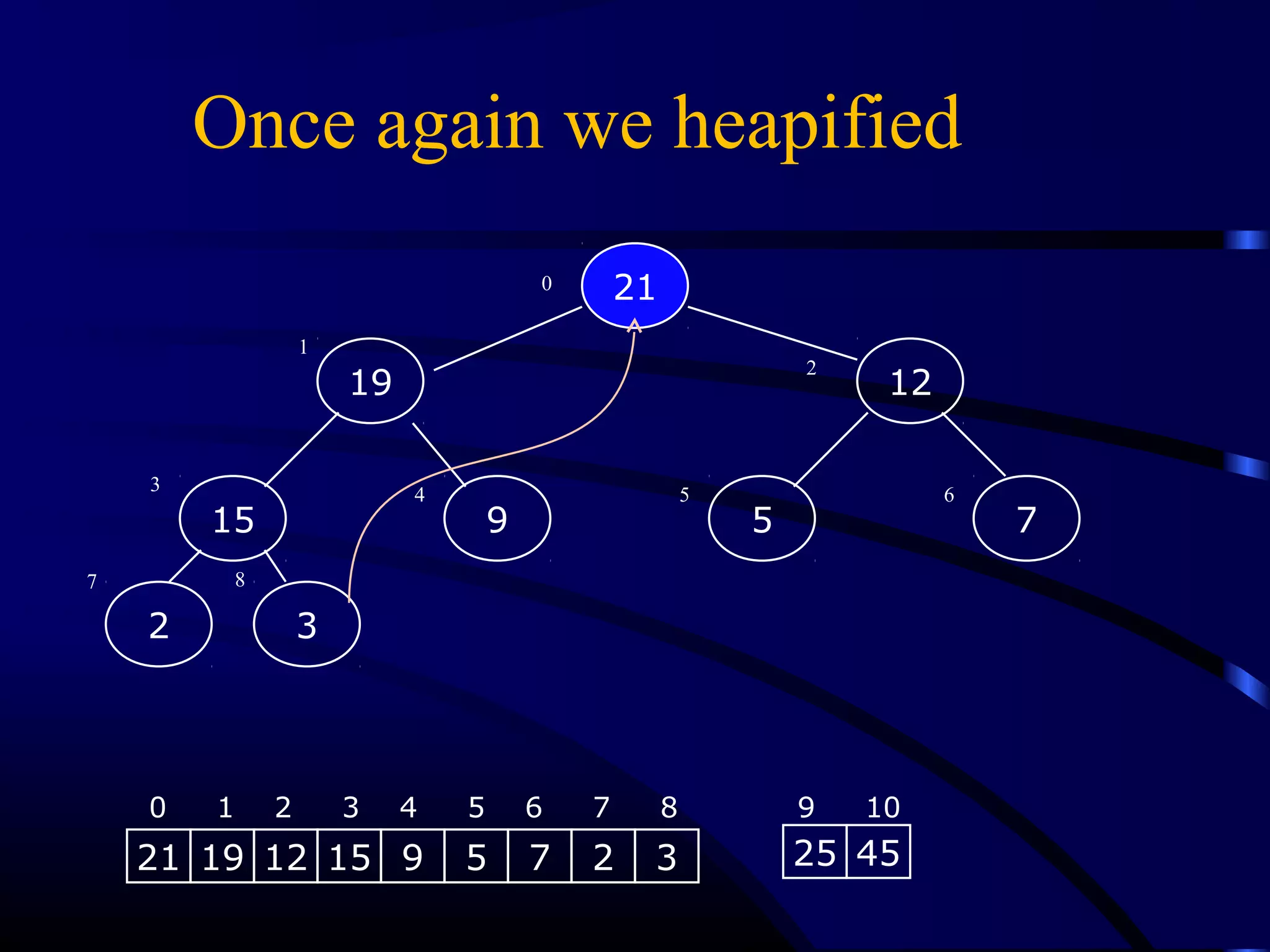
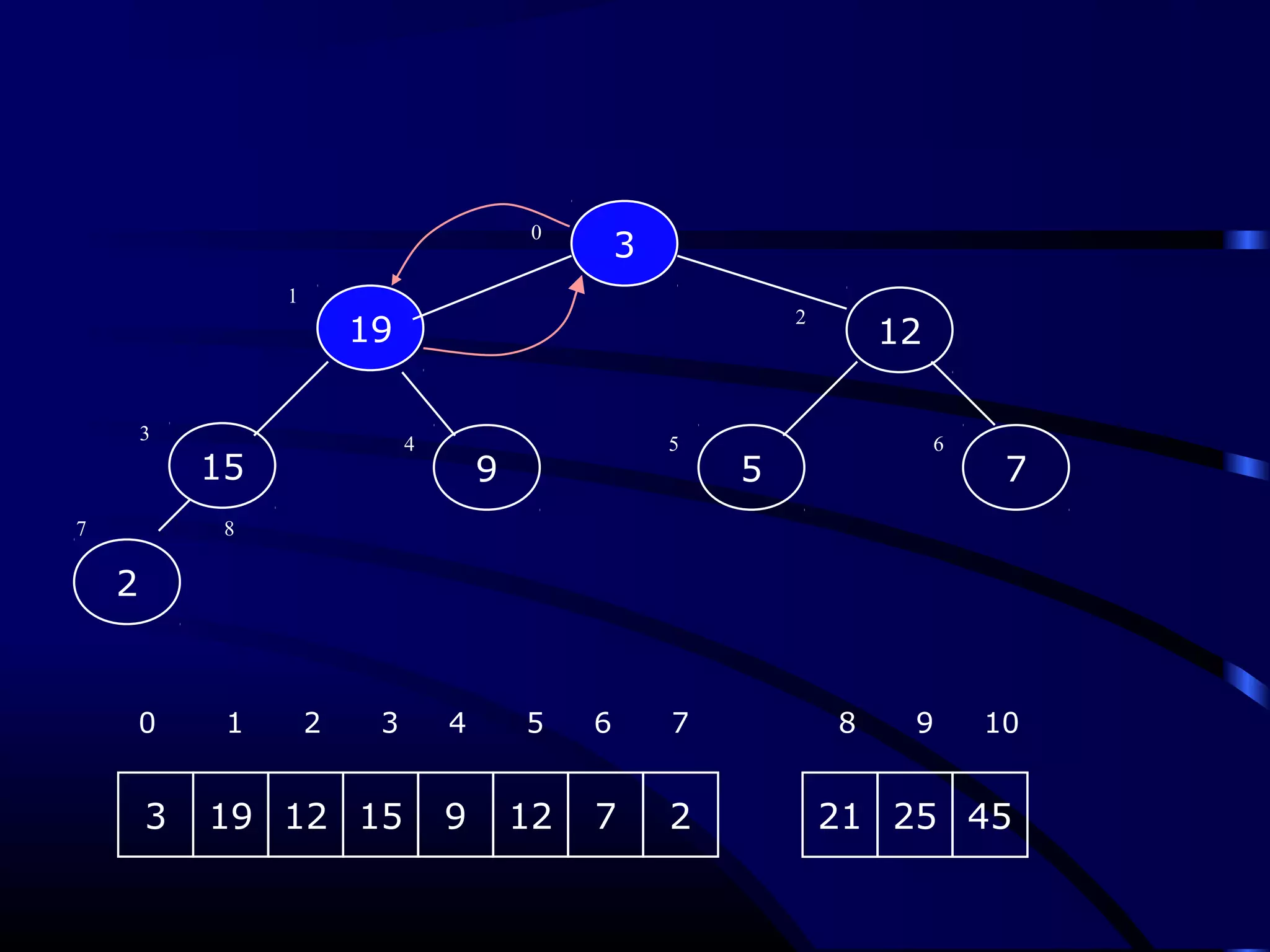
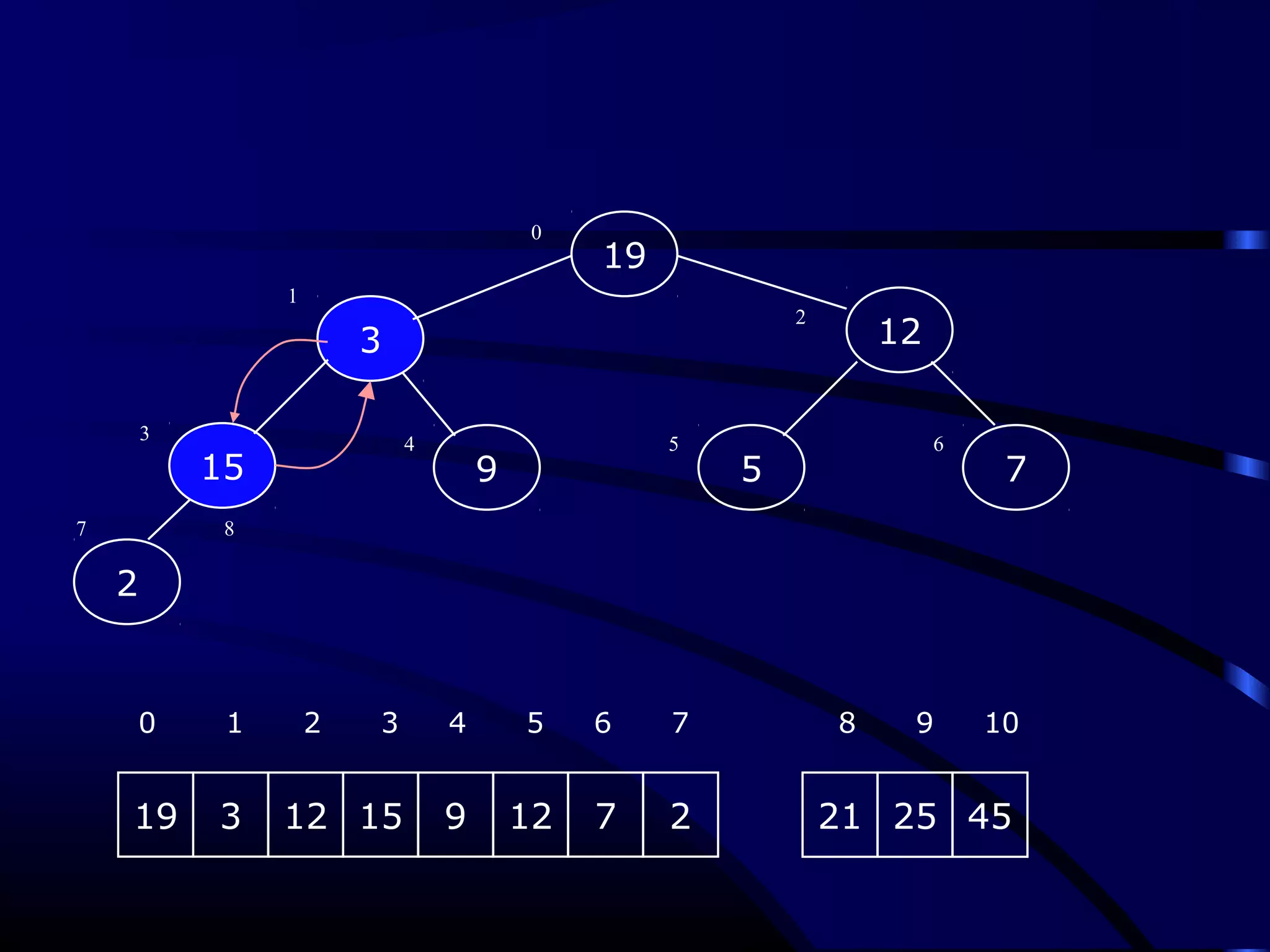

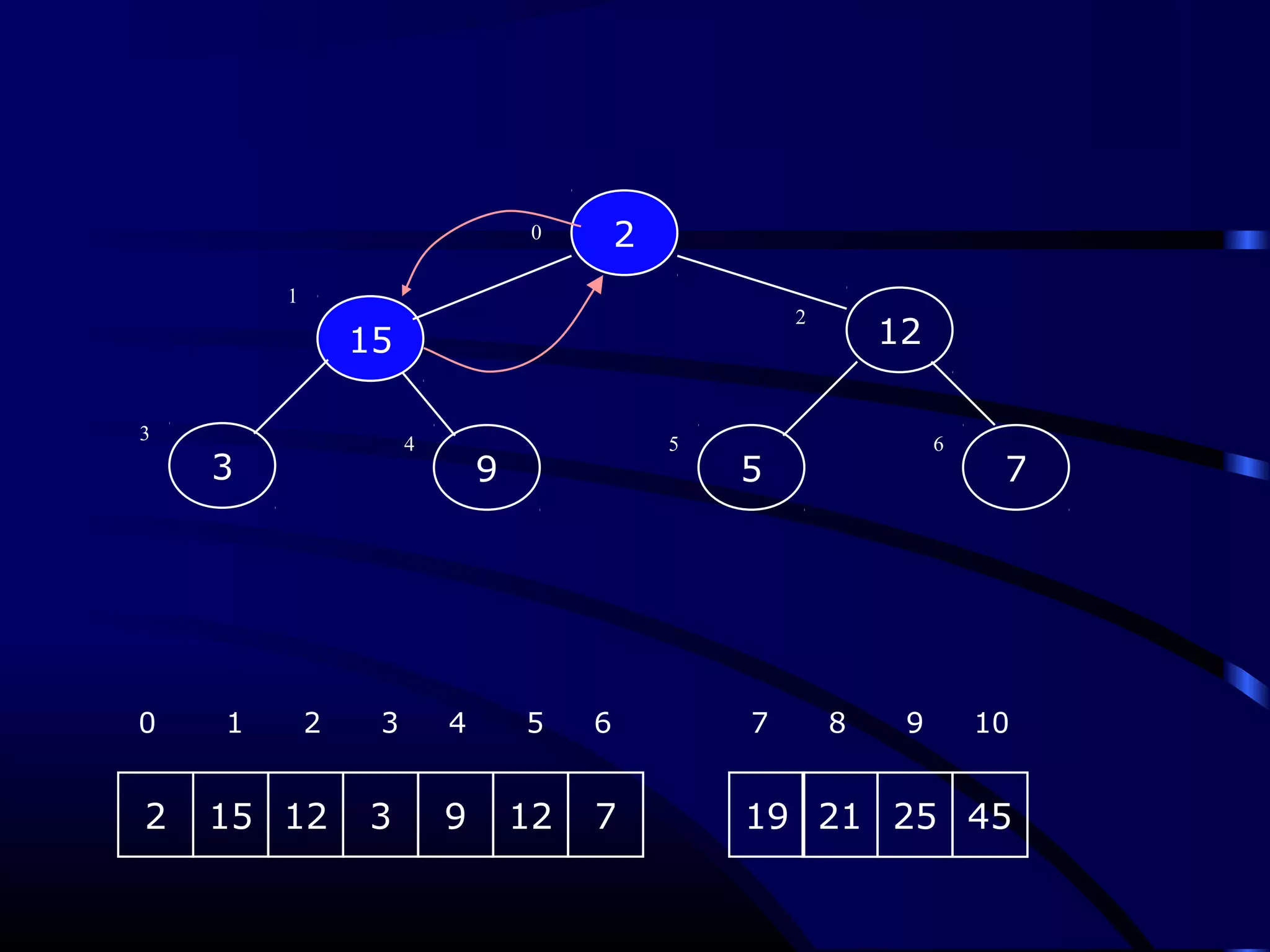
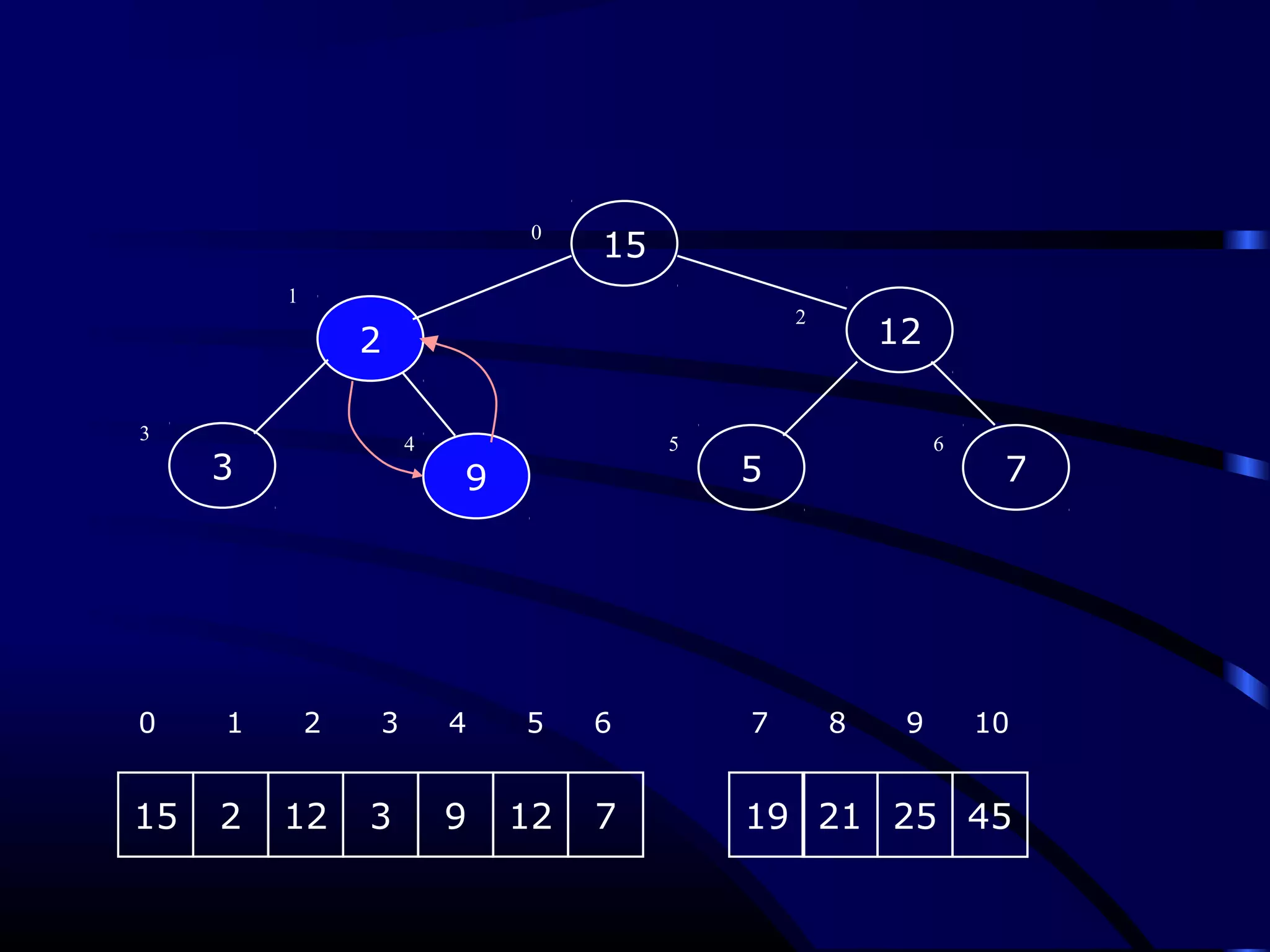

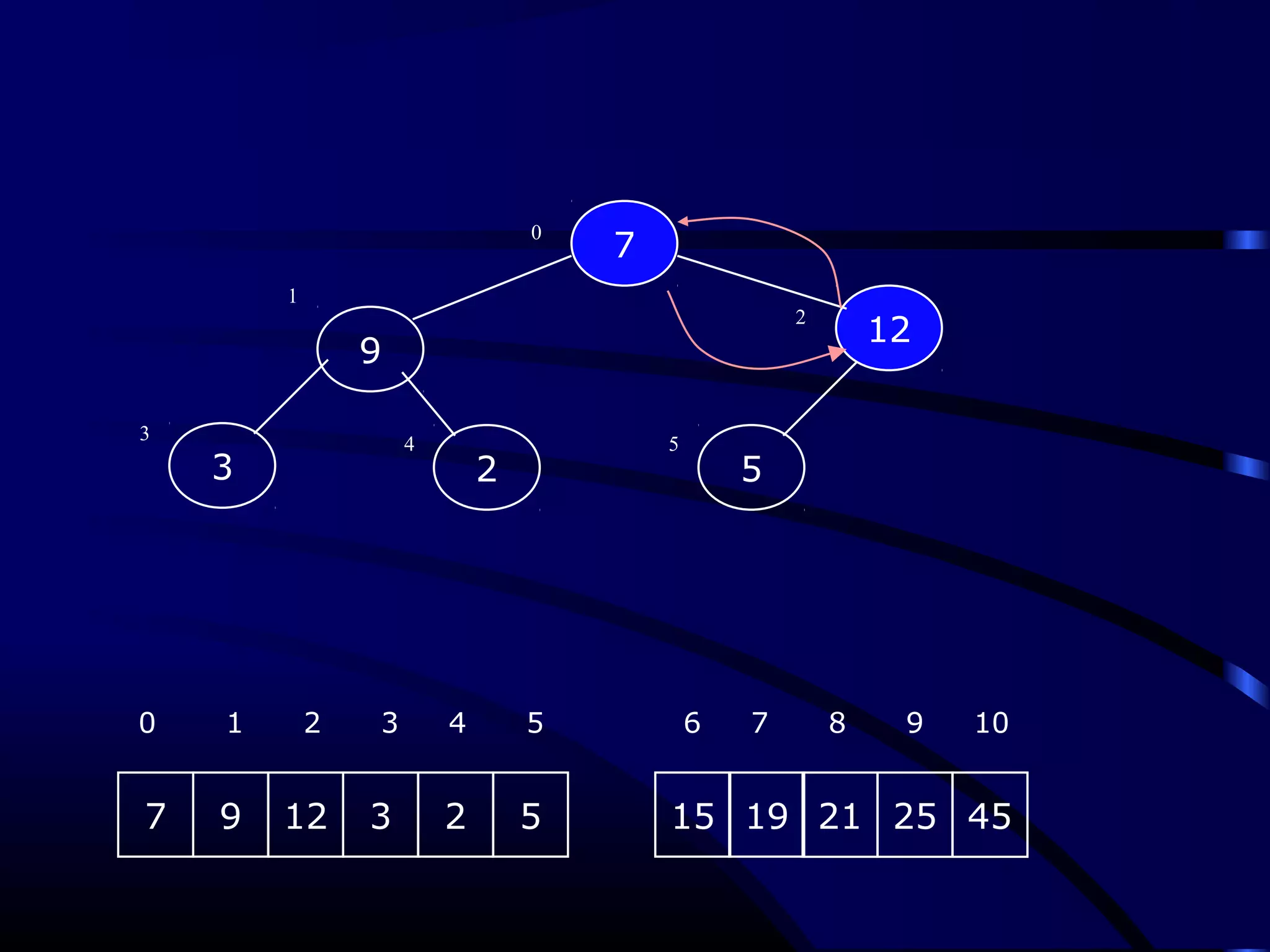
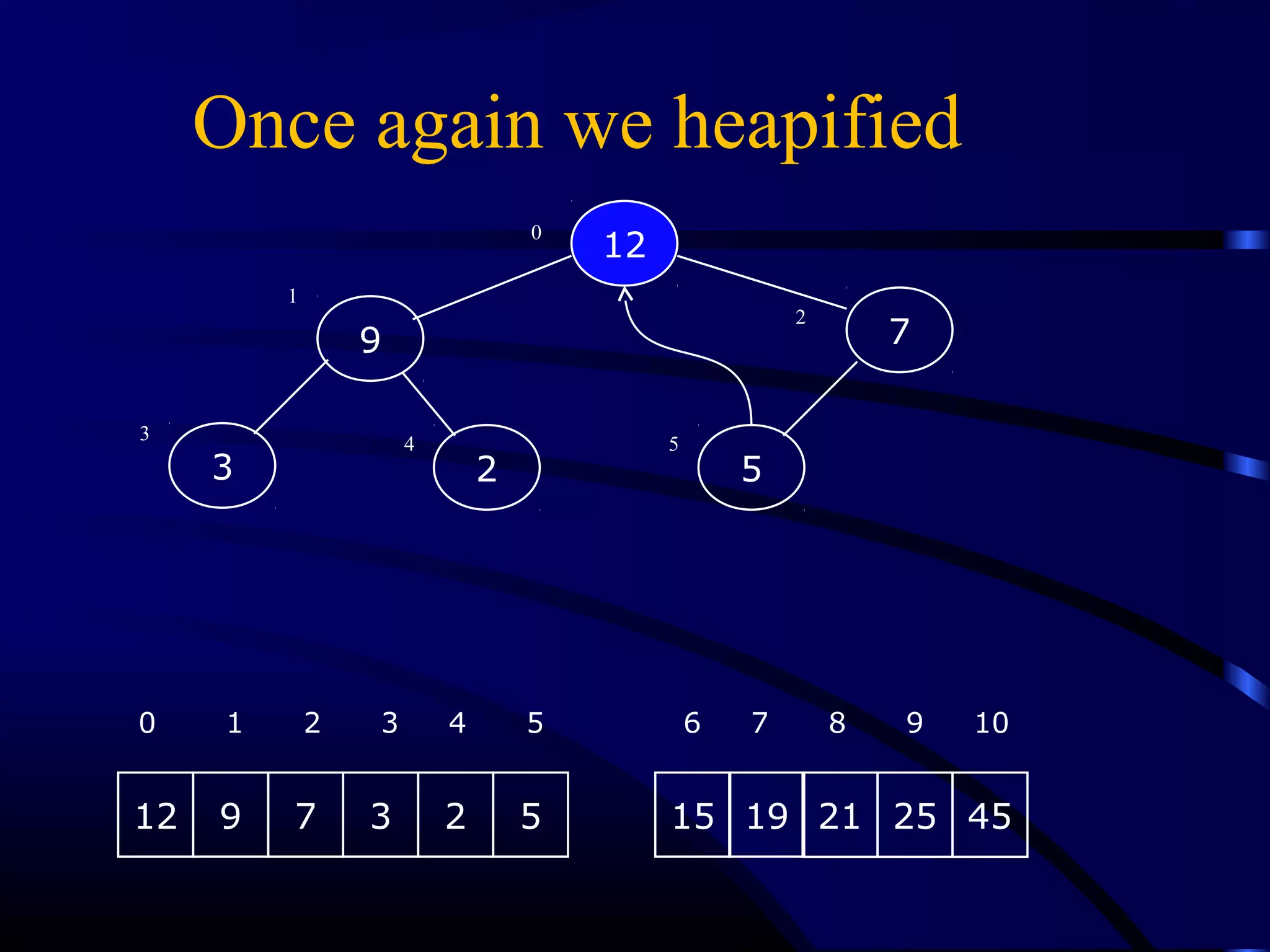
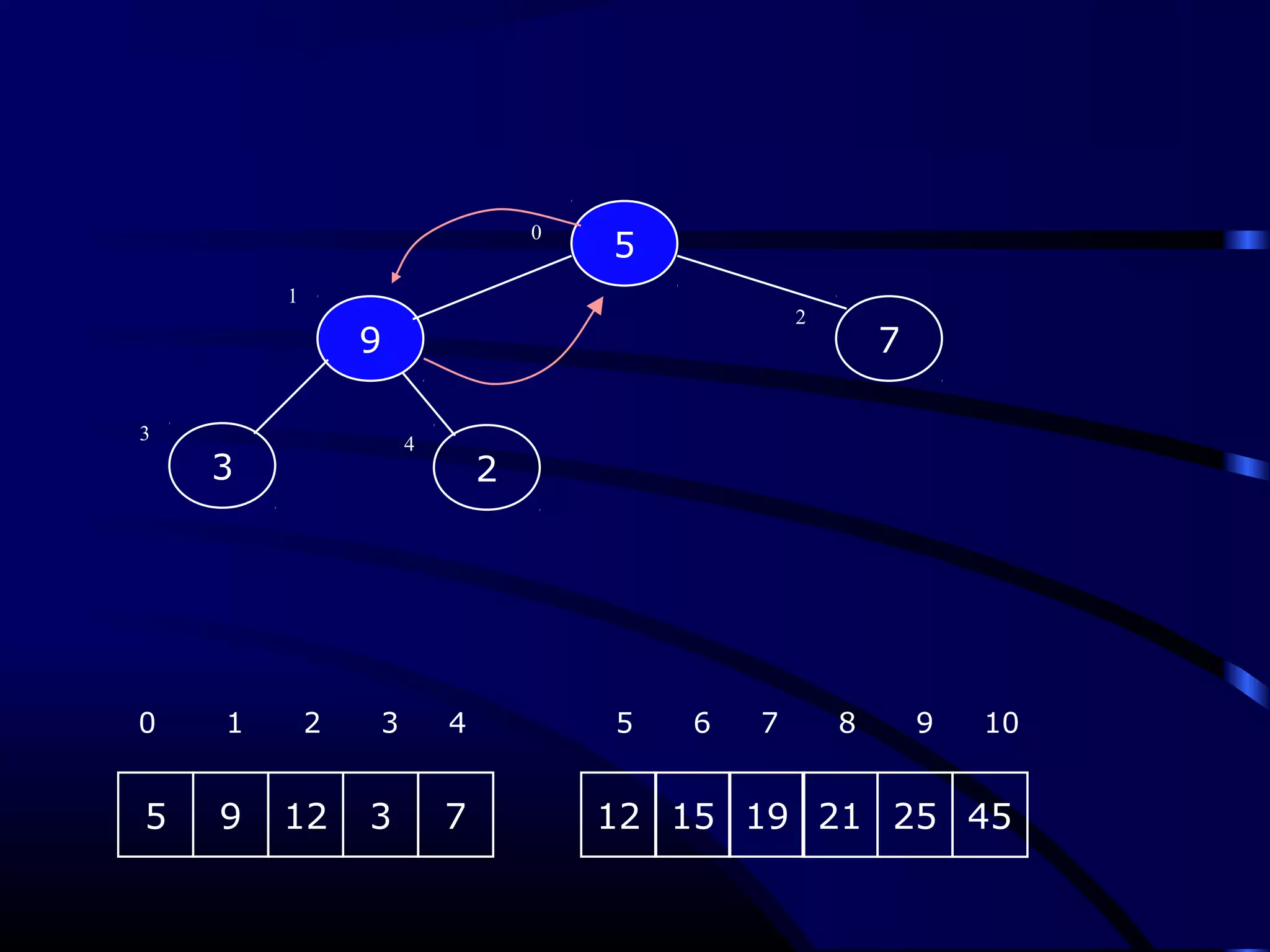
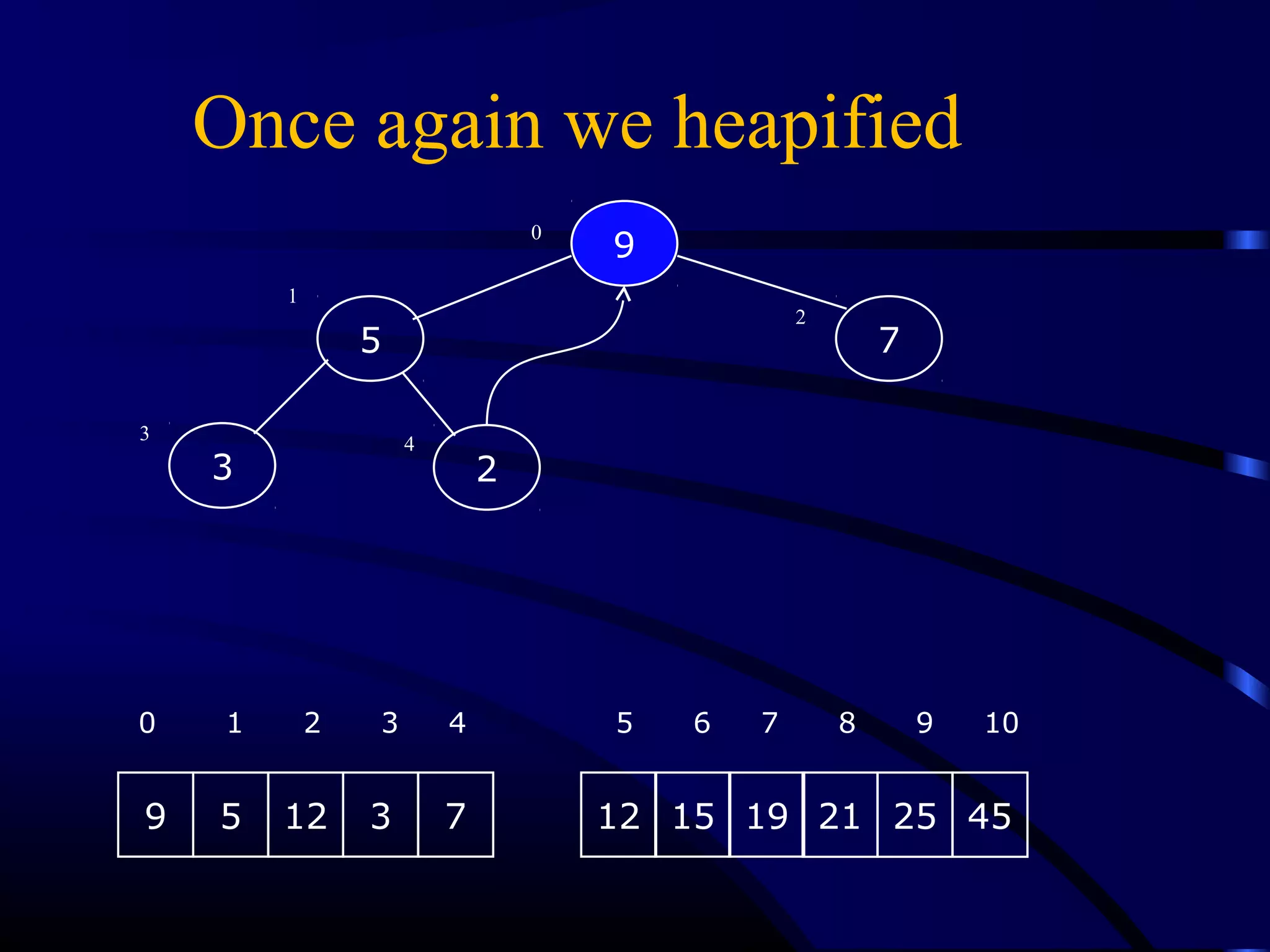
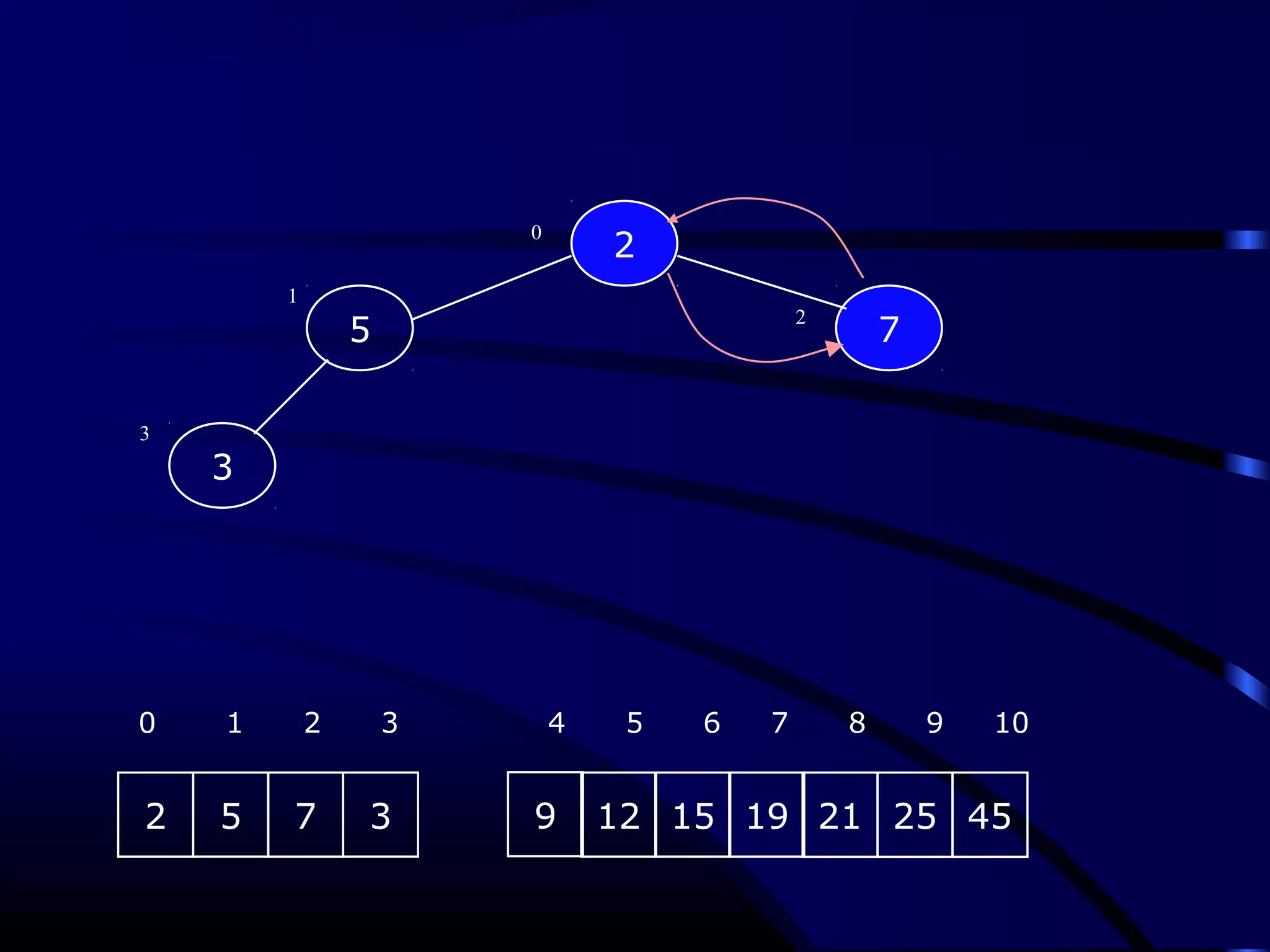
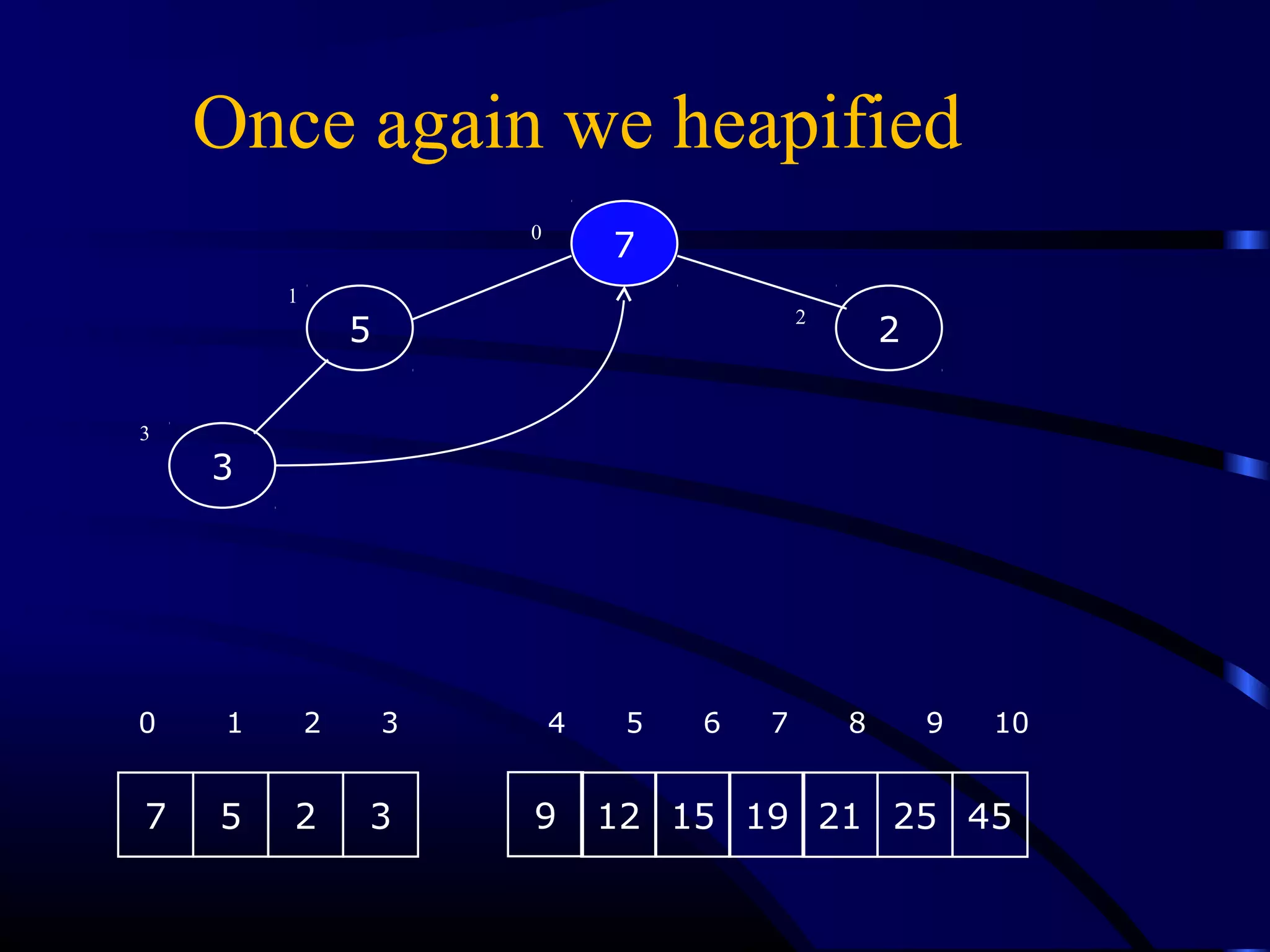
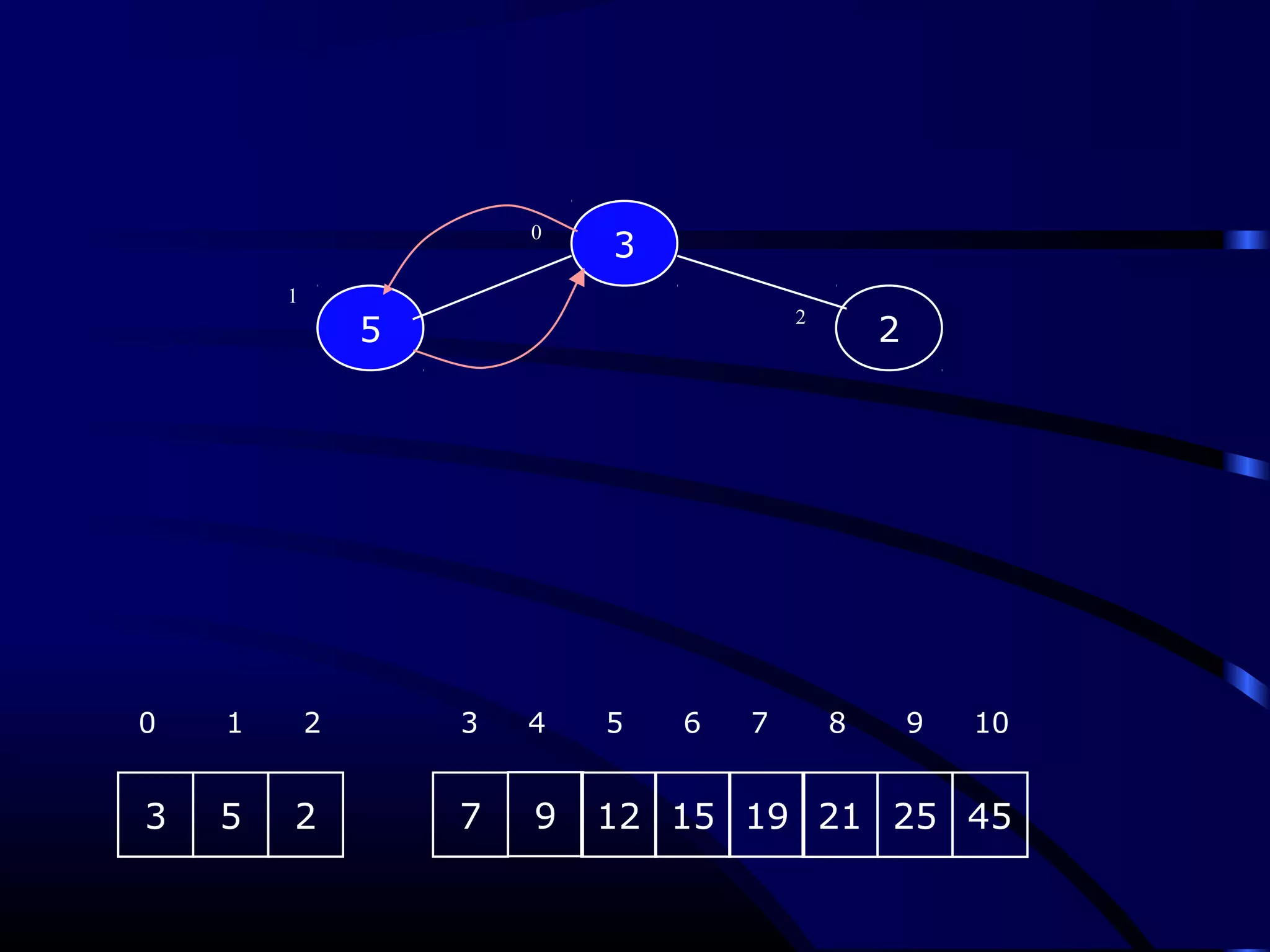

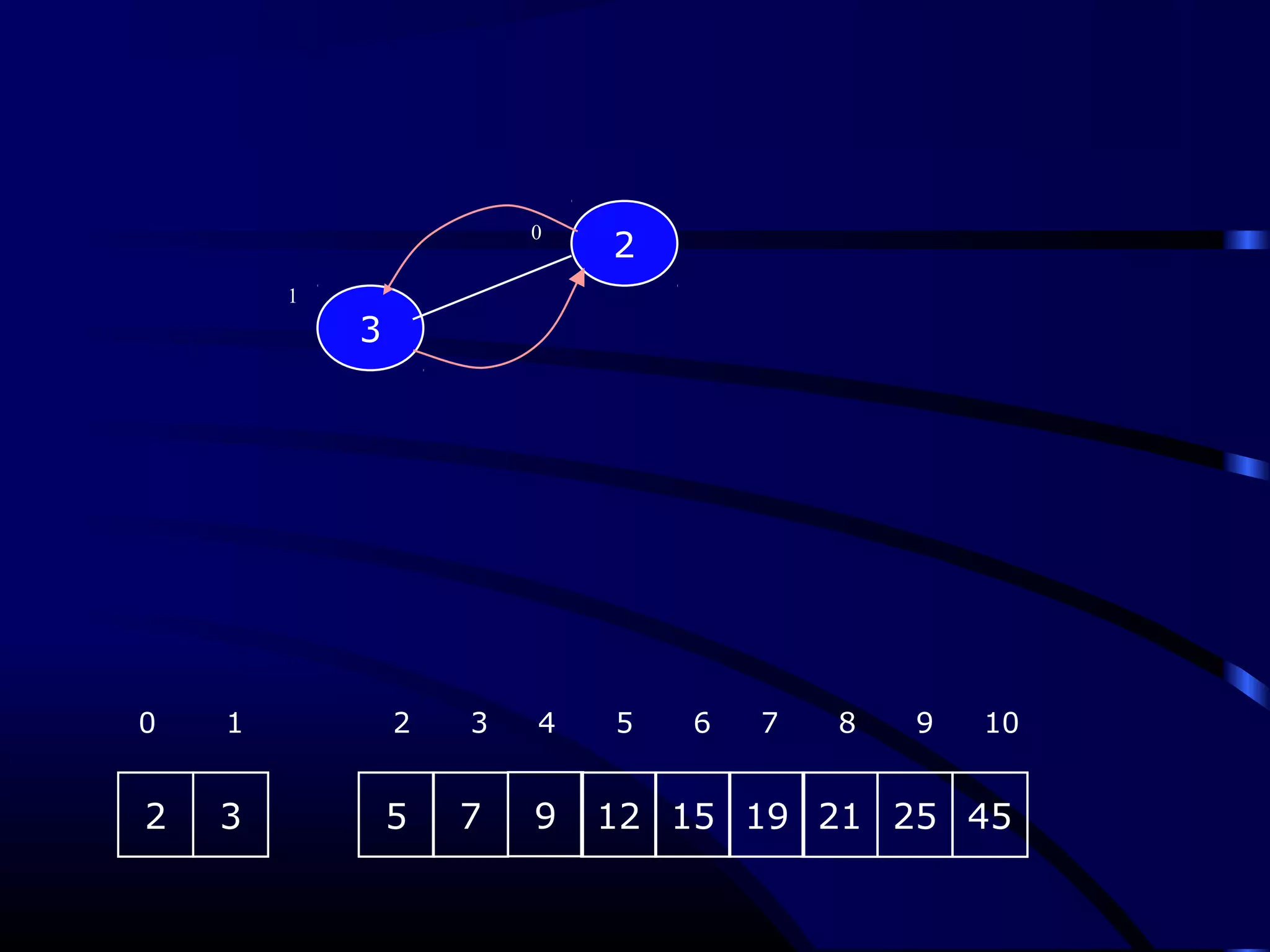


![Heapify (Heapify (AA,, ii))
1. l ← left [i]
2. r ← right [i]
3. if l ≤ heap-size [A] and A[l] > A[i]
4. then largest ← l
5. else largest ← i
6. if r ≤ heap-size [A] and A[i] > A[largest]
7. then largest ← r
8. if largest ≠ i
9. then exchange A[i] ↔ A[largest]
10. Heapify (A, largest)](https://image.slidesharecdn.com/heapsortokkay-130729085157-phpapp01/75/Heapsortokkay-46-2048.jpg)
![Void CreateHeap(int arr[],int size)
{ int i,father,son;
for(i=1;i<size;i++)
{ int element=arr[i];
son=i;
father=floor(son/2);
while((son>0)&&(arr[father]<element))
{ arr[son]=arr[father];
son=father;
father=floor(son/2);
} arr[son]=element;
}
CODE 4 HEAPIFYING](https://image.slidesharecdn.com/heapsortokkay-130729085157-phpapp01/75/Heapsortokkay-47-2048.jpg)

![void root_deletion( )
{
for ( int i = count - 1 ; i > 0 ; i-- )
{
int temp = arr[i] ;last value
arr[i] = arr[0] ;passing the root value
arr[0]=temp;
makeheap(i);
}
}
Root deletion program
implementation](https://image.slidesharecdn.com/heapsortokkay-130729085157-phpapp01/75/Heapsortokkay-49-2048.jpg)
